

Oral History
What this handout is about.
This handout will help you figure out how to use oral histories in essays. It will give you suggestions for how to prepare for and conduct oral history interviews and help you determine, based on your context and purpose, how to integrate raw material into your essay.
Introduction
If we aren’t experts on a particular time or culture, our knowledge of it is often limited to major events and sweeping trends. This doesn’t necessarily help us understand the everyday experience of life in the past or in another culture. However, we do know a great deal about everyday experience in our own time and culture, and a large part of that knowledge comes not from textbooks but from talking to others. We learn about the histories of our families through conversation with those who remember them and about what various cultures value by observing their celebrations and listening to their music, among other things. So if you want to learn about another culture, country, era, etc., why not use a version of this strategy and talk to people who are or were part of it about their experiences and memories?
Oral history involves interviewing a person or group to get an inside perspective into what it was like to live in a particular time or is like to live as the member of a particular group within a society. Interviewing a group of people can create a picture of that experience, and a large project of this kind (such as UNC’s Southern Oral History Project) can be a way of preserving a piece of history. When we interview one person, we gain knowledge of an individual’s experiences, which may or may not be typical of their time and culture. We can also learn more about the experiences of groups from all sections of society, including the ones whose experience is not always thoroughly known or well documented, such as the working class, ethnic or religious minorities, or women.
When professors use oral history projects in classes, they usually ask you to interview only one or two people. The interview stage of the process requires effective question-making and interviewing skills. Usually, the project consists of taking raw material from an interview and shaping it into an essay. This step requires you to make some decisions about how you want to present the material and analytical skill to help you interpret what you learn.
Who uses oral history projects and why
Fields in which you might be assigned an oral history paper include history, anthropology, and other disciplines that study the experiences of specific social groups such as women or ethnic groups. The goals of these fields affect the ways they use this kind of project:
- History : Historians use evidence to understand the experiences of people in the past. Oral history can be a valuable source of evidence for understanding the experiences of individuals or groups within a certain historical period. Oral testimony cannot replace analysis of traditional historical materials (official documents, letters, newspapers, secondary sources, etc.). It can, however, reveal the role of individuals in shaping the past and/or how larger trends impacted the individual. When an oral history essay places the experiences of an individual within the context of a historical period, it can help illuminate both the individual’s experience and the historical period.
- Folklore : Folklorists study culture as it is expressed in everyday life and often use oral history projects to gather materials to preserve and study. Interviewing individuals is one of the primary means of accessing folklore; for example, folklorists use oral histories to learn about a culture’s musical traditions or festivals.
- Anthropology : An archeologist might use oral history to learn more about the lifeways of peoples who have living descendants or to locate sites for archeological excavation. A cultural anthropologist might use oral history as a way to understand how individuals think of themselves in relation to the rest of the world. This technique can help anthropologists understand how culture shapes individuals either consciously or unconsciously, on the one hand, and the ways that individuals contribute to the production of culture, on the other hand.
Fields that study marginalized social groups (such as women, African-Americans, Latino/as): In these fields, conducting and analyzing an interview is a way of uncovering experience that might be underrepresented in mainstream culture. Dominant cultures have a tendency not to notice or acknowledge the experiences of certain subgroups, viewing them as peripheral rather than central—in other words, marginalizing them. Academic fields have emerged to explore the experiences of marginalized groups, and these fields tend to value experiential knowledge. Oral history projects can be a way of accessing such knowledge.
Preparing for the interview
Before the interview, familiarize yourself with the history and characteristics of the culture your interviewee is from. That way, you’ll have a context for what you learn.
Some interviews may be fairly unstructured, with only general guidance from you. For instance, you may just choose some topics to discuss, allowing the interviewee to lead the way. This is appropriate when your goal is relatively broad, such as the preservation of the person’s voice, memories, and perspective, as opposed to using the interview to construct a focused argument. Some interviews, especially those in undergraduate course assignments, are more highly structured and take the shape of a list of questions and responses. This is especially useful when you hope to use the raw material of the interview to make a particular point or are looking to address very focused issues. If you are planning a more structured interview, prepare a list of questions, including some basic ones about aspects of the person’s identity (such as age, level of education, and occupation). In devising your questions, consider the interviewee’s cultural context. Think about what kinds of issues would be most helpful for you to learn about. For instance, learning how the person felt about major life events might help you understand how your interviewee sees their life as a whole. Questions about what it was actually like to live through segregation or the Vietnam War might give you a new perspective on a historical time period. As you ask your questions, work from your list, but be ready to ask follow-up questions in case you don’t understand the response or want to know more. A response to one of your questions may also trigger curiosity about some other issue, so it’s good to be ready to follow whatever path seems most promising. Include open-ended questions, especially “how” and “why” questions, as they will probably yield the richest raw material for your essay; asking yes/no questions is okay for gathering factual information. Ask for examples when you think it would help you (and the readers of your essay) understand the person’s perspective.
Conducting the interview
To conduct the interviewing process in an ethical way, ask the person’s permission to use their comments in your essay; written consent is ideal so you have a record of it. If you are recording a phone conversation, the interviewee’s written consent is required by law. Ask if the interviewee would prefer that you not use their actual name.
Tape record the interview if possible. If you try to work only from notes, you won’t have an exact record of the person’s comments and could end up distorting their meaning. Test your tape recorder, digital voice recorder, or videocamera ahead of time and bring extra batteries if necessary. If you’re recording, try to minimize background noise. In any interview setting, try to select an environment free from distractions, so that both you and the interviewee will be able to concentrate. Choose a spot where you will both feel comfortable. Silence will feel awkward at first, but give your interviewee a chance to think. Don’t move on too quickly just because there is a bit of a pause. Watch for signs of fatigue. If the person you’re interviewing begins to seem tired, take a break or set up another time to finish the interview. Treat the person you’re interviewing with respect, regardless of your own attitudes and opinions. Making assumptions about the person may damage trust and skew the essay you write.
Transcribing oral histories
Sometimes, you may be asked to transcribe your oral history interview or part of it. Transcription is the process of taking a sound file and translating it to text; it creates a written transcript of an oral conversation. One of the goals of transcribing interviews is to give readers a sense of the interview—how was it formatted, was it formal or informal, did the interviewer ask a lot of questions or did the interview subject do most of the talking with just a few prompts, what language and speaking style did the participants use?
A transcript of an oral history interview is, in the words of one style guide, “at best an imperfect representation of an oral interview. The transcriber’s most important task is to render as close a replica to the actual event as possible. Accuracy, not speed, is the transcriber’s goal” (Baylor Style Guide). Therefore, the transcript should reflect, as closely as possible, the words, speech patterns, and thought patterns of the interview subject. Their word choice, grammar, and ideas should be transcribed as accurately as possible. It’s not generally necessary, though, to reproduce a dialect or accent, unless you have specific training in doing so. The same style guide says, “Oral history is not an exercise in literary composition; the transcriber should avoid value judgments about the grammar or vocabulary of an interviewee.”
Transcribing can be a long and very detailed process. It will be easiest if you take detailed notes during the interview about the different questions, topics, and themes that you discuss. Write down any memorable phrases or ideas, so you have some markers for different points in the interview. You will need to listen to the entire portion of the interview to be transcribed several times. Many people find it helpful to listen all the way through a section once, then again, transcribing as much as possible, then a third (or fourth, or fifth!) time in order to fill in all the holes. At the end of this handout, you will find some websites that detail how to transcribe an oral history interview.
When you have a complete transcript, it is common practice to return it to the interviewee for editing—these changes can be noted in various ways or integrated into the document. Interviewees may need to correct things like dates, names, or places. Or they may want to provide more elaboration or clarification on a subject. Though this is standard practice for professional historians, your instructor may or may not expect you to do this.
Turning the raw material into an essay
The process you use will depend on what you want your essay to do. If, for instance, you want your essay merely to showcase an individual’s thoughts on a time or subject, you will simply need to frame the comments of the interviewee and shape them into a narrative. If, on the other hand, your intention is to interpret the interviewee’s comments, using them as evidence for an argument, you will need to make a strong argument while still letting the interviewee’s experience and insights come through. Your essay might use the interviewee’s comments to advance an alternate interpretation of a historical time or culture, confirm a commonly held characterization, or enrich an existing view.
Because oral history papers can vary a great deal according to their aims, make sure to develop a clear sense of your purpose. The assignment itself may specify quite clearly what kind of an oral history project you may do or leave many of the choices up to you. In either case, figuring out what you want your essay to accomplish will help you make definitive decisions about how to write it.
Decisions you’ll need to make about your project
First, determine the overall purpose of your essay. What would you like your essay to do?
A . Transcribe the comments of the individual.
B . Present the experiences and/or perspective of the individual.
C . Place the individual’s experiences and/or perspective within a larger historical or social context.
D . Use the individual’s experiences and/or perspective to make an argument about a larger historical or social context.
(C and D are especially common in undergraduate assignments of this type, but every assignment is different.)
Based on your answer to the above question, choose which section of this handout you’d like to read. If you’re not certain what you’d like your essay to do, read through all of the following sections to get a better sense of what your essay might include.
If you answered A., that you want your essay to transcribe the comments of the individual, consider the following questions and responses
What should you say about the interviewee’s comments?
Introduce the individual, explain the circumstances of the interview, and then literally transcribe your questions and their responses.
How should you structure your essay?
Present the questions and responses in the order you asked the questions. You may also include an introduction that briefly describes the person.
How should you present quotes and use paraphrases?
Transcribe the questions and responses so that paraphrases won’t be necessary. A question and answer format is a clear way to present a transcription (see the “examples” section at the end of this handout).
Should you read and/or incorporate secondary sources?
Whether or not you need to use secondary sources is partially a matter of what the assignment calls for. Secondary sources about the cultural context might help you think of your questions, but you won’t need to include them in your transcription of the responses.
Here is an example of how you might handle one of your interviewee’s comments within the body of the essay. Suppose that your paper is for a women’s studies project in which your instructor has asked you to interview a female family member; you have chosen to interview your grandmother, Lucretia. Suppose that you asked the following question: “How free did you feel in terms of choosing your jobs? If you felt limited, why do you think that might have been?”
If you want your essay to transcribe the interview, you will just present the questions and answers:
[Your name]: How free did you feel in terms of choosing your jobs? If you felt limited, why do you think that might have been? Lucretia: I have always been good at organizing things and getting along with people, so that made it easy for me to find receptionist jobs. But in those times, you didn’t see women executives. That was just how things were; people simply didn’t consider women for those jobs.
If you answered B., that you want your essay to present the experiences and/or perspective of the individual, consider the following questions and responses
Introduce the individual and outline the topics that the interview explored. Then use these topics to help you decide whether you want to organize the essay by the sequence of your questions or by topics that emerged as you reviewed your notes. You may frame the interviewee’s comments by providing transitions and a conclusion that reiterates the central point(s) that the interview revealed.
Your introduction should say a few things about who the person is and name some of the recurring themes or issues to prepare the reader to notice those in the body of the essay. The body of the essay should organize the interviewee’s comments, for instance chronologically or topically, and provide bridges (transitions) between sections.
Frame your quotes will phrases like “Sue Ellen explained . . .” or “Horatio’s view on plum trees is that . . .”; if you use paraphrases, be careful not to change their implications or lose their intent, since your goal is to present rather than interpret. For this approach as well as the next, our handout on quotations might be helpful.
If your assignment asks you to present (“B”) the results in essay form, you will integrate the questions and answers into your text, although sometimes you may find it easier to just paraphrase the question:
While Lucretia does feel that her occupational life offered her some opportunities, she describes feeling a sense of limitation, at least in retrospect: “I have always been good at organizing things and getting along with people, so that made it easy for me to find receptionist jobs. But in those times, you didn’t see women executives. That was just how things were; people simply didn’t consider women for those jobs.”
If you answered C., that you want your essay to place the individual’s experiences and/or perspective within a larger historical or social context, consider the following questions and responses
Analyze the responses to your questions and what they illustrate about their historical or social context. You might consider how your interviewee’s identity (their class, gender, and ethnicity, for instance) relates to the nature of the interviewee’s experience or perspective. For this kind of essay, you’ll need an analytical thesis statement (see our handout on thesis statements ), a plan for how to organize the subtopics that demonstrate your thesis, analysis/interpretation of the interviewee’s comments, and a conclusion that draws your analysis together.
Your introduction should contain and explain a thesis statement that makes a claim about the nature of the historical or social context. Organizing the body paragraphs by topic may be an effective way of explaining how the individual’s experiences fit into the broader historical or social context.
You’ll provide framing phrases as in the previous case, but you’ll also need to include your explanation of the significance of the quotes. A good general guideline is to include at least as much explanation of the quote as the quote is long. Paraphrases are helpful when you need just the content of the comment to make your point—that is, when the language the interviewee uses is not the primary issue. If you’re writing an analytical or argumentative essay, a mixture of paraphrases and quotes will probably serve your purpose best.
Whether or not you need to use secondary sources is partially a matter of what the assignment calls for. But if the assignment doesn’t specify, you’ll probably need to read and perhaps refer explicitly to some secondary sources so that you will have the necessary evidence to create a picture of the broader historical or social context.
If your assignment asks you to place the responses in their social context, you will need to integrate the quotes into text, paired with either the questions themselves or paraphrases, along with some analysis of how the individual’s experiences fit into their social context. You may even include some references to secondary sources, depending on the assignment and your own sense of whether they would strengthen your analysis:
Lucretia describes feeling limited in terms of her occupational life: “I have always been good at organizing things and getting along with people, so that made it easy for me to find receptionist jobs. But in those times, you didn’t see women executives. That was just how things were; people simply didn’t consider women for those jobs.” Her account reveals a sense of how fixed gender roles were in the workplace and seems fairly typical for the time and place, as feminist historian Tammy Ixplox’s scholarship suggests (Ixplox 39).
If you answered D., that you want your essay to use the individual’s experiences and/or perspective to make an argument about a larger historical or social context, consider the following questions and responses
Use the interviewee’s comments as evidence for an argument you want to make about a particular historical or social context. For instance, you might want to argue that working-class women’s experience in 1950s America does not necessarily fit with popularly-held notions of the fifties housewife. Or you might want to show how racism affected one African-American man’s everyday life to demonstrate how insidious racism can be. For these kinds of essays, you may need some supporting research to get a better sense of the historical and social context, so you’ll understand how the individual’s experience relates to broader cultural trends and phenomena. In terms of what the essay will look like, you’ll need a thesis that makes a claim, an organizational plan that reflects the main points you think will best support that thesis, lots of explanation of how the interviewee’s comments illustrate the thesis, and a conclusion that draws your argument together.
You’ll need an introduction with a strong, interpretive thesis statement that the body of the essay explains and demonstrates. The interviewee’s comments will function as evidence for your argument, so each body paragraph should correspond to a point in your argument.
You’ll provide framing phrases as in the previous case, but you’ll also need to include your explanation of the significance of the quotes. A good rule of thumb is to include at least as much explanation of the quote as the quote is long. Paraphrases are helpful when you need just the content of the comment to make your point—that is, when the language the interviewee uses is not the primary issue. If you’re writing an analytical or argumentative essay, a mixture of paraphrases and quotes will probably serve your purpose best.
Whether or not you need to use secondary sources is partially a matter of what the assignment calls for. But if the assignment doesn’t specify, you’ll probably need to read and incorporate some secondary sources to complement or provide a counterpoint to the interviewee’s comments and to support your claims about the larger historical or social context.
If your assignment asks you to make an argument, for example, about how the interviewee’s responses reflect gender issues and roles, you will need to integrate the quotes into your text as evidence for your argument about gender roles, perhaps with reference to secondary sources if appropriate:
Lucretia’s experiences reveal gender roles in the workplace, in which only men tended to fill the executive positions. She describes feeling limited in terms of her occupational life: “I have always been good at organizing things and getting along with people, so that made it easy for me to find receptionist jobs. But in those times, you didn’t see women executives. That was just how things were; people simply didn’t consider women for those jobs.” In her experience, no one questioned these roles, which reveals how ingrained and even internalized social expectations for different genders were at the time. This phenomenon is consistent with feminist historian Tammy Ixplox’s scholarship on this cultural context (Ixplox 39).
Works consulted
We consulted these works while writing this handout. This is not a comprehensive list of resources on the handout’s topic, and we encourage you to do your own research to find additional publications. Please do not use this list as a model for the format of your own reference list, as it may not match the citation style you are using. For guidance on formatting citations, please see the UNC Libraries citation tutorial . We revise these tips periodically and welcome feedback.
Baylor University. n.d. “Transcribing Style Guide.” Institute for Oral History. Accessed June 24, 2019. https://www.baylor.edu/oralhistory/index.php?id=931752 .
Library of Congress. n.d. “Indexing and Transcribing Your Interviews.” Veterans History Project. Last updated August 2020. http://www.loc.gov/vets/transcribe.html .
Moyer, Judith. 1993. “Step-by-Step Guide to Oral History.” DoHistory . Harvard University. http://dohistory.org/on_your_own/toolkit/oralHistory.html .
Shopes, Linda. 2002. “Making Sense of Oral History.” History Matters: The US Survey Course on the Web. February 2002. http://historymatters.gmu.edu/mse/oral/ .
You may reproduce it for non-commercial use if you use the entire handout and attribute the source: The Writing Center, University of North Carolina at Chapel Hill
Make a Gift
University Library
Search form, books, articles & more.
- Articles and Databases
- Books & More at UCSC Cruzcat
- Search Libraries Worldwide Melvyl
- Online Journals
Get Started
- Start Your Research
- Choose A Topic
- Search A Database
- Evaluate Sources
- Ask a Librarian Get help online or in person
- Find Resources by Subject Research Guides
- Cite Your Sources
- Locate a Book in the Library
Connect From Your Computer
- Off-Campus Access Options
- Off-Campus Access Proxy
- Eduroam On-Campus Wifi
- Renew an Item
- Borrow a Laptop
- Borrow Tech & Equipment @ the David Kirk DSC
- Borrowing Policies
- Billing Fees, Overdues & Lost Materials
Interlibrary Loan (ILL)
- Borrow From Another Library Melvyl
- My ILL Account
- How to Request an ILL
- ILL Help & FAQs
Course Materials
- Course Reserves
- Course Guides
- Teaching Support Work with a librarian to support your class
Library Spaces
- Reserve a Study Room
- Quiet Study Areas
- Library Computers
- David Kirk Digital Scholarship Commons
- Media Desk @ the David Kirk DSC
Special Collections & Archives
- Find Materials
- Collection Highlights
- Grateful Dead Archive
- Regional History Project Oral Histories
- About Special Collections
Library Collections
- Our Collections
- Digital Collections
- Video Games
- Maps & Aerial Photographs
- Recommend a Purchase
Scholarly Communication & Publishing
- Open Access
- Research Data Management
- Digital Scholarship Digital assignments & project consultation
Library Buildings
- About the Library
- McHenry Library
- Science & Engineering Library
Know the Library
- News & Events
- Library Newsletter
- Friends of the Library
Library Contacts
- Staff Directory
- Maps & Directions
Our Organization
- About the UCSC Library
- Library Organizational Chart
- Job Opportunities
Policies & Strategy
- University Library Policies
- Strategic Directions
- Strategic Goals
Oral History Research and Resources
- About Oral History
- Selected Digital Oral History Collections
- Bibliography
- Online Manuals
- How to Cite Oral History
- Library Research
What is Oral History?
Oral history is a method of conducting historical research through recorded interviews between a narrator with personal experience of historically significant events and a well-informed interviewer, with the goal of adding to the historical record. Because it is a primary source, an oral history is not intended to present a final, verified, or "objective" narrative of events, or a comprehensive history of a place, such as the UCSC campus. It is a spoken account, reflects personal opinion offered by the narrator, and as such it is subjective. Oral histories may be used together with other primary sources as well as secondary sources to gain understanding and insight into history.
Principles and Best Practices
- Principles and Best Practices for Oral History The Oral History Association encourages individuals and institutions involved with the creation and preservation of oral histories to uphold certain principles, professional and technical standards, and obligations.
- Oral History in the Digital Age Oral History in the Digital Age is the go-to place for the latest information on digital technologies pertaining to all phases of the oral history process. This resource is a product of an Institute of Museum and Library Services (IMLS) National Leadership project and a collaboration among the Michigan State University Digital Humanities Center, Matrix; the American Folklife Center (AFC/LOC), the Library of Congress; the Smithsonian Center for Folklife and Cultural Heritage (CFCH); the American Folklore Society (AFS); the Louie B. Nunn Center for Oral History, University of Kentucky Libraries; and the Oral History Association.
Organizations
- Oral History Association The Oral History Association, established in 1966, seeks to bring together all persons interested in oral history as a way of collecting and interpreting human memories to foster knowledge and human dignity. With an international membership, the OHA serves a broad and diverse audience. Local historians, librarians and archivists, students, journalists, teachers, and academic scholars from many fields have found that the OHA provides both professional guidance and a collegial environment for sharing research.
- International Oral History Association A professional association established to provide a forum for oral historians around the world, and a means for cooperation among those concerned with the documentation of human experience. IOHA seeks to stimulate research that uses the techniques of oral history and to promote the development of standards and principles for individuals, institutions and agencies (both public and private) who have the responsibility for the collection and preservation of historical information gathered through the techniques of oral histories, in all forms. Through international conferences, collaborative networks, and support for national oral history organizations, IOHA seeks to foster a better understanding of the democratic nature and value of oral history worldwide.
- Oral History Listserv: H-Oralhist H-Oralhist is a network for scholars and professionals active in studies related to oral history. It is affiliated with the Oral History Association.
- Groundswell: Oral History for Social Change An emerging and dynamic network of oral historians, activists, cultural workers, community organizers, and documentary artists.
- Oral History Review The Oral History Review, published by the Oral History Association, is the U.S. journal of record for the theory and practice of oral history. Its primary mission is to explore the nature and significance of oral history and advance understanding of the field among scholars, educators, practitioners, and the general public.
- Words and Silences Words and Silences is the official on-line journal of the International Oral History Association. It is an internationally peer reviewed, high quality forum for oral historians from a wide range of disciplines and a means for the professional community to share projects and current trends of oral history from around the world.
Oral History Research Guide

Get Research Help
Email a Librarian send us your questions directly
Email: Ask a Librarian
Sign Up for a Consultation with a librarian by phone or Zoom
Search JSTOR
Search Articles in JSTOR
Find a Database
Article Databases
Search Databases by Title:
Browse A-Z List of Databases
- Next: Selected Digital Oral History Collections >>

Creative Commons Attribution 3.0 License except where otherwise noted. See details .

- Harvard Library
- Research Guides
- Faculty of Arts & Sciences Libraries
Library Support for Qualitative Research
Oral history.
- Resources for Methodology
- Remote Research & Virtual Fieldwork
Oral History Collections at Harvard
Oral history collections beyond harvard, harvard library research guides for oral history, selected resources to make your own oral histories, handbooks and guides to oral history methodology, scholarship & commentary on oral history methodology, participative resources and projects for oral history.
- Data Management & Repositories
- Campus Access
On this page, you will find:
- Selected Oral History Collections at Harvard and Beyond Harvard
- Scholarship and Commentary on Oral History Methodology
Harvard Project on the Soviet Social System Digital Collection: Interviews and Manuals, 1950-1953 (inclusive) Named the Harvard Project on the Soviet Social System (also known as the Harvard Refugee Interview Project), this was a large scale, unclassified project, based largely on interviews with Soviet émigrés in West Germany, Austria, and the United States, aimed at gaining new insights into strategic psychological and sociological aspects of the Soviet social system.
Oral Histories at Schlesinger Library on the History of Women in America Get started with archival research on women's oral histories with this guide.
Woodberry Poetry Room Oral History Initiative Check out video recordings on YouTube of this 2021 series of oral histories on pioneering Boston women poets. Tip: Look for "ORAL HISTORY INITIATIVE" in the title.
Find More at Harvard
You may search for interviews and oral histories (whether in textual or audiovisual formats) held in archival collections at Harvard Library. HOLLIS searches all documented collections at Harvard, whereas HOLLIS for Archival Discovery searches only those with finding aids. Although HOLLIS for Archival Discovery covers less material, you may find it easier to parse your search results, especially when you wish to view results at the item level (within collections). Try these approaches:
Search in HOLLIS:
- To retrieve items available online, do an Advanced Search for interview* OR "oral histor*" (in Subject), with Resource Type "Archives/Manuscripts," then refine your search by selecting "Online" under "Show Only" on the right of your initial result list. Revise the search above by adding your topic in the Keywords or Subject field (for example: African Americans ) and resubmitting the search.
- To enlarge your results set, you may also leave out the "Online" refinement; if you'd like to limit your search to a specific repository, try the technique of searching for Code: Library + Collection on the "Advanced Search" page .
Search in HOLLIS for Archival Discovery:
- To retrieve items available online, search for interview* OR "oral histor*" limited to digital materials . Revise the search above by adding your topic (for example: artist* ) in the second search box (if you don't see the box, click +).
- To preview results by collection, search for interview* OR "oral histor*" limited to collections . Revise the search above by adding your topic (for example: artist* ) in the second search box (if you don't see the box, click +). Although this method does not allow you to isolate digitized content, you may find the refinement options on the right side of the screen (refine by repository, subject or names) helpful. Once your select a given collection, you may search within it (e.g., for your topic or the term interview).
Digital Public Library of America (DPLA) To find oral histories among the millions of materials from libraries, archives, museums, and other cultural institutions across the United States, search for "oral history," and then use the subject and other refinements to discover oral histories of interest to you.
The HistoryMakers Contains interviews African Americans who have made a significant contribution in area of American life or culture, or who has been associated with a particular movement or organization that is important in the African American community. Disciplines include Art, Business, Civics, Education, Entertainment, Law, Media, Medicine, Military, Music, Politics, Religion, Science, Sports and Style. Harvard constituents have full access to this database when connecting via Harvard.
Library of Congress Digital Collections The Library of Congress provides several oral history collections online. To locate them, search the Digital Collections site for "oral history".
Oral History Centers and Collections Curated by members of the H-OralHist Network.
Oral History Online An index to worldwide oral history collections, with links to interview-level bibliographic records in English and to full-text materials, audio files and visual files where these are available.
Smithsonian Center for Folklife and Cultural Heritage Collections More than 80,000 historical and contemporary items from the Smithsonian Center for Folklife and Cultural Heritage's Ralph Rinzler Folklife Archives and Collections are available in the Smithsonian’s Collections Search Center . Find complete collection descriptions in finding aids and inventories in the Smithsonian Online Virtual Archive , which often include digital surrogates.
South Asian Oral History Project The SAOHP has been conducted in four phases. Each phase is marked by key historical events that drew South Asians to the United States: 1) 1950s Immigrants, 2) 1960s and 1970s Immigrants, 3) 1980s Immigrants, 4) South Asian classical performing artists (vocalists, instrumentalists and dancers) in the Pacific Northwest. The transcriptions and audio recordings from phase one and the transcription and audio/video recordings from phase two through four are available digitally.
1947 Partition Archive The 1947 Partition Archive, "The Archive" has been preserving oral histories of Partition witnesses since 2010 through a combined program that includes an innovative technique for crowdsourcing by Citizen Historians, as well as collection by trained scholars. Nearly 10,000 oral histories have been preserved on digital video, making The Archive the largest documentation effort focused on Partition. Oral histories have been recorded from 500+ cities in 15 countries across the world. See information about accessing the archive materials .
Statue of Liberty Oral History Project: A Record of Living Memory One of the world’s largest and most diverse chronicles of the American immigrant experience, this resource includes interviews from passengers, families, immigration officials, military personnel, detainees, and former Ellis Island employees. It is available to researchers, students, educators, and the general public.
The Tretter Transgender Oral History Project A growing collection of oral histories of gender transgression, broadly understood through a trans framework.
Visual History Archive (VHA), USC Shoah Foundation Created by the Shoah Foundation, this fully indexed and searchable digital repository contains the visual testimony of approximately 55,000 survivors of genocidal wars. The majority of the testimonies are from Holocaust survivors (1939-1945) but the archive also includes survivor testimony from the 1994 Genocide against the Tutsi in Rwanda (1994), the Armenian Genocide (1915-23) the Cambodian Genocide, the Guatemalan Genocide (1978-96) and the Nanjing Massacre (1937), among others. For more information about the testimonies, visit the VHA guide . Harvard constituents have full access to this repository when connecting via Harvard.
Ways of Knowing Oral History Collection This project documents the stories of individuals who have developed and implemented alternative library classification schemes or controlled vocabularies. These projects describe how institutional descriptive practices facilitate some ways of knowing and not others and demonstrate that such practices can change.
Oral History and Interviews, Harvard Library Research Guide for History Compiled by Harvard Librarians, this guide offers strategies for locating oral history interviews, as well as a list of relevant databases and collections.
Freshman Seminar 64 E Asian American Literature The "Oral History" section of this guide lists several oral history resources relevant to researching the Asian American experience in the 1960s.
ArcGIS StoryMaps An engaging platform for presenting your oral histories.
See the "Conducting Interviews" and "Transcription & Coding" tabs of the Interview Skills page of this guide . There, you will find technical tools, tips, and assistance available at Harvard. Please note that these resources have been selected for a wide range of interviewing methodologies; thus, some may not apply to the oral history genre.
Beyond Harvard
The Centre for Oral History and Digital Storytelling at Concordia University You will find here innovative approaches to oral history, some of which utilize various art forms.
Columbia Center for Oral History Research: Resources A helpful selection of resources for conducting oral history research.
Oral History guide from Coates Library, Trinity University Useful tips and resources compiled by Abna Schnur.
Oral History Metadata Synchronizer (OHMS) Created by the Louie B. Nunn Center for Oral History at the University of Kentucky, this tool allows producers of oral history to inexpensively and efficiently enhance access to oral history online. Because OHMS provides word-level search capability and a time-correlated transcript or indexed interview, the audience is connected from a search result to the corresponding moment in a recorded interview.
American Folklife Center at the Library of Congress. Oral History Interviews Recommendations for planning an oral history project and tips for conducting interviews
American Folklife Center at the Library of Congress. Folklife and Fieldwork: A Layman’s Introduction to Field Techniques Although folklorists tend to be more interested in documenting ways of living than history, per se, many of their methods are similar. This guide includes helpful advice for conducting fieldwork in folklore, including tips for planning, conducting, recording, and archiving interviews.
Indigenous Studies: Oral History Provides helpful information and resources to inform respectful understanding and citation of Indigenous oral histories.
Oral History Association: Principles and Best Practices An invaluable document for maintaining an ethical stance as a researcher, with guidance on archiving interviews and managing rights/copyright.
Oral History Methodology (Hajek A., 2014) The case study starts with a historical outline of the advent of oral history research in Western society, its strengths and its weaknesses, before it moves to a practical exploration of oral history methodology. It explains how to set up an oral history project, how to conduct interviews and what legal concerns to keep in mind. It also provides details on recording equipment and discusses a number of potential outputs of oral history data.
The Oral History Reader (edited by Perks, R. and Thomson, A., 2015) A comprehensive, international anthology combining major classic articles with cutting-edge pieces on the theory, method and use of oral history.
Webinar: Introduction to Oral History and Interviewing , Centre for Oral History and Digital Storytelling, Concordia University
Belfast to Boston: Oral History Goes Awry WNYC Studios' "The Takeaway" speaks with Boston Globe columnist, Kevin Cullen, about how Boston College's well meaning attempt to promote truth and reconciliation around the Troubles backfired on the ground in Belfast.
Blee, K. (1993). Evidence, Empathy, and Ethics: Lessons from Oral Histories of the Klan. The Journal of American History, 80(2), 596-606. doi:10.2307/2079873 Critically examines issues that arise in oral history methodology around the life stories of ordinary people whose political agendas are unsavory, dangerous, or deliberately deceptive.
Davis, M., & Kennedy, E. (1986). Oral History and the Study of Sexuality in the Lesbian Community: Buffalo, New York, 1940-1960. Feminist Studies, 12 (1), 7-26. doi:10.2307/3177981 This article explores the role of sexuality in the cultural and political development of the Buffalo lesbian community.
Portelli, Alessandro. (2010). The death of Luigi Trastulli. Memory and event - memory and fact. Anuarul Institutului De Istorie Orală : AIO, 12, 245-274. Luigi Trastulli, a young steel worker in Terni, Italy, died in an altercation with police in 1949, when workers left the factory to protest against a North-Atlantic Treaty signed by the Italian Government. The strike, confrontation and assassination greatly impacted the identity and culture of Terni. This essay discusses how the event has been portrayed and interpreted over the years in both official and oral sources. The essay linked above is in Italian. For an English language translation, see The Death of Luigi Trastulli, and Other Stories.
Portelli, Alessandro (2016). What makes oral history different. In Perks, Robert and Alistair Thomson, The Oral History Reader, Routledge, p. 68-78. Publisher abstract: "There seems to be a fear that once the floodgates of orality are opened, writing (and rationality along with it) will be swept out as if by a spontaneous uncontrollable mass of fluid, amorphous material. But this attitude blinds us to the fact that our awe of writing has distorted our perception of language and communication to the point where we no longer understand either orality or the nature of writing itself. As a matter of fact, written and oral sources are not mutually exclusive. They have common as well as autonomous characteristics, and specific functions which only either one can fill (or which one set of sources fills better than the other). Therefore, they require different specific interpretative instruments. But the undervaluing and the overvaluing of oral sources end up by cancelling out specific qualities, turning these sources either into mere supports for traditional written sources, or into an illusory cure for all ills. This chapter will attempt to suggest some of the ways in which oral history is intrinsically different, and therefore specifically useful."

- << Previous: Interview Research
- Next: Data Management & Repositories >>
Except where otherwise noted, this work is subject to a Creative Commons Attribution 4.0 International License , which allows anyone to share and adapt our material as long as proper attribution is given. For details and exceptions, see the Harvard Library Copyright Policy ©2021 Presidents and Fellows of Harvard College.
- Research Guides
- Public Guides
Getting Started with Oral History
- Planning an Oral History Project
- Oral History Principles and Practices
- Oral History Equipment
- Conducting an Interview
- Participating in an Oral History Interview
- Preserving and Sharing Projects
- Interview Forms and Templates
Before You Interview
- Planning Your Project
- Create Your Interview Outline
- Pre-Interview
- Check Your Tech
Careful planning is key to a successful oral history project. Before you jump into interviews, consider the following:
Step 1: Define your main question or topic of interest
Every oral history project starts with a point of curiosity or interest. Do you wonder what your neighborhood was like 20 years ago? Are you interested in a specific moment or event in history? Do you want to preserve the memories of elders in your family? Or the history of a group or organization in your community? All of these questions and more would be great starting points for an oral history project.
Some questions to consider when choosing a topic for your project:
What do I already know about this topic? What don’t I know?
What barriers might I face when researching this topic?
Is oral history the best way to learn about this topic?
Are there people I can interview about this topic?
Am I repeating someone else’s project? Have others done similar projects that can inspire me? Am I doing something no one has done before?
If you need help defining your project, reach out to us at [email protected] to ask questions or set up a consultation with staff.
Step 2: Determine your project goals
As you shape your project, consider the following questions:
Who is this project for and why?
What is the main topic (or topics) that this project will explore?
What do you know about the subject? What are you hoping to learn?
Are there people you can interview who are willing and able to share their perspectives on your topic?
What is the scope of your project? Is there a specific time period or angle that you can use to frame your topic?
What is your desired outcome from this project? For example, you could:
Add videos or recordings to public platforms like YouTube, Vimeo, the Internet Archive, SoundCloud, or others
Write a blog, article, or even a book
Create an online exhibit using platforms like Omeka , Pachyderm , Scalar , or others
Use interviews in a school project
Share an informal oral presentation with your family or community
Write down your topic and main goals. Even if you never share this document with anyone else, it will help you to have your big ideas on paper.
Step 3: Conduct preliminary research
Once you have your project focus and goals in mind, do some background research. Familiarize yourself with your topic and give yourself some framing information for your interview questions. The BPL is a great place to start your research, and librarians can help you find information about your topic. For help with research questions, email [email protected] .
Tips for Research:
Has someone already conducted research on the topic or topics that interest you? Does it make sense for you to pursue this project or choose a different topic that hasn’t yet been explored?
Review published and unpublished material about your topic in order to learn more about it and prepare for your interviews.
Who are the knowledge keepers of your topic? Are they willing and able to share their stories with you in a recorded interview? If no one has this information, or are unable to share information, then consider a different research topic.
Develop a basic outline of the narrators’ lives; a pre-interview discussion with your narrator is a great time to do this. Having a broad understanding of major life events or experiences in advance of the interview can help you craft your questions.
Step 4: Choose narrators
Narrators are people who share their first-person accounts in an interview. An oral history project rests upon the narrators’ memories: through their testimonies, they actively add their experiences to the historical record. It is important to build a trusting and honest relationship with your narrators in which they have power over their own stories. After identifying who you would like to interview, be sure to fully explain your project and the narrator's role within it. Read through the section on Informed Consent in this guide for more information about working with narrators.
Step 5: Create an interview outline
Once you have researched your topic and found your narrator, it is a good idea to construct an outline to guide your recorded interview. Because no two narrators will have the same life experiences, there’s no one-size-fits-all approach to structuring your interview. Instead, you can think of the interview outline as a flexible roadmap that guides you and your narrator through your interview topics. It doesn't have to contain fully scripted questions; some people find it more helpful to simply list key terms, ideas, or events that you want to inquire about. You can also share this document with the narrator in advance of your interview; this gives them a chance to help shape the interview by adding their own ideas and striking topics they don’t want to discuss.
Step 6: Hold a pre-interview
An informal, non-recorded pre-interview conversation with your narrator will help both of you map out your expectations, test your technology, discuss consent, and come up with questions together. Encourage the narrator to ask questions during this conversation and to state any topics that they don’t want to address during the interview. Remember: the narrator is the expert of their lived experience; listen to their ideas, and respect their needs and desires throughout the interview process. At the end of the pre-interview, schedule the interview itself.
Step 7: Record your interview
Before starting the recorded interview, make sure to test the recording equipment. You’ll want to make sure that the recorder is charged and working. Remind the narrator that you are there to ask questions, and that the interview will center their experiences. Because so much attention is devoted to one party, it will feel different from a regular conversation; this is okay! For in-depth information about how to conduct the interview, see the "Conducting an Interview" section of this guide.
Step 8: Consider how you will preserve your interview
When considering storage, it is important to remember the acronym LOCKSS: “Lots Of Copies Keep Stuff Safe!” Recordings should be backed up to computers and kept in multiple file and drive locations; consider cloud storage options as well.
Step 9: Consider how you or others will use your recorded interviews
We create oral history projects with the intent of using and sharing them with others. Depending on the scope and focus of your project, there may be many different options for you to share interviews with the world. Communicate clearly with your narrators about how you intend to use and share their interview prior to recording; do not use or share their interview without their express consent. It is our responsibility to use oral histories honestly and respectfully, and to honor the narrators’ experiences and intent. It’s also important to recognize that, in making an oral history publicly available, you are opening up a narrator’s words to interpretation beyond your control. For more information, please see the “Preserving and Sharing Oral Histories'' section of this guide.
Adapted from The American Folklife Center, Library of Congress, " Oral History Interviews: Family History and Folklife, " 2015.
Let your research guide you! Before sitting down with your narrator, create a list of key terms and phrases relating to the information you would like to learn. This outline will in turn guide your interview.
Tip: Drafting a list of specific questions ahead of time may feel too scripted and rigid, preventing your narrator from being fully candid and you from following up for details. Instead, compose questions around your key terms and phrases to help your narrators recall the past and share their stories.
A pre-interview conversation with your narrator will help both of you map out your expectations, test your technology, and unearth some avenues for inquiry.
Your narrator may want to know what you’re planning to ask ahead of time. You can share a list of questions or topics you plan to cover; this will give them a sense of structure, spark memories, and help build trust.
During the interview, your narrator may offer information that wasn’t on your topic list but merits further investigation. That’s okay! That’s great! You can ask follow-up questions, and once you’ve covered the new topic to your satisfaction, you can return to your list and move on to the next topic. Remain flexible and treat your outline as a road map; you have a destination in mind, but it’s okay (and encouraged!) to explore and take the scenic route along the way.
Example Outline
An oral history with a lifelong resident of Boston’s Egleston Square may use an outline that looks something like this:
Egleston Square
Description (geographical boundaries): Egleston Square straddles Roxbury and Jamaica Plain; runs along Washington Street from about Dimock Street to Green Street and along Columbus Avenue from about Dimock Street and Walnut Avenue
Origin of name: unclear but some scholars believe Egleston Square might have been named for William R. Egleston, a Black soldier who served in the Union Army's Fifth Cavalry during the American Civil War
What are your earliest memories of Egleston Square?
Important places in memory (residences, businesses, schools, churches, parks, historic sites):
Franklin Park
National Center of Afro-American Artists
Egleston Branch of the Boston Public Library
Egleston Square Peace Garden
Brewery Complex
Southwest Corridor
Residential neighborhoods
How did people get around? What modes of transportation did you use?
Orange Line - ask about Washington Street Elevated (1901-1987)
Times people got together: when, where, why (politics, sports, play, social life)
Concerts and games in Franklin Park
Block parties
Racial, ethnic, economic makeup of neighborhood
Changes in neighborhood demographics from childhood to present day
Neighborhood leaders, characters, important organizations
Kendra Hicks
Delphine Walker
City Life Vida Urbana
Describe relationship to the city? To surrounding neighborhoods?
Major celebrations in the neighborhood (holidays, rites of passage)
Sense of safety and security (examples: health, crime, environmental factors)
Effects of a major historic event on the neighborhood (examples: Great Depression, WWII, urban renewal, highway construction, Blizzard of ‘78)
Changes in the neighborhood over time
Adapted from Baylor University Institute for Oral History, “ Creating an interview outline ,” 2012.
An informal pre-interview conversation with your narrator will help both of you map out your expectations, test your technology, and come up with questions and ideas together.
This conversation is not recorded and gives you and your narrator a chance to get to know one another, iron out the technical logistics of recording, ensure the informed consent of all participants, and is an opportunity for the interviewer to gather some biographical information that can inform your interview questions.
Encourage the narrator to ask questions during this conversation (and any time!).
At the end of the pre-interview, schedule the interview itself.
You can use the pre-interview template in this guide to structure your pre-interview
Adapted from Boston Research Center, Oral History Toolkit , 2020.
- Oral History Pre-Interview Template A helpful guide for structuring a pre-interview conversation.
Do a couple of test runs with your recording technology before conducting your interview. This will help ensure that you are familiar with how your gear works, and that you can make appropriate adjustments in the interview setting.
Some considerations and questions to ask yourself before you hit record:
Is your recording device fully charged? Do you have spare batteries and/or an extension cord? Do they work?
Make a short test recording (this is the part where you get to say, “Testing 1, 2, 3”). Play it back: is there background noise or feedback? Is the volume too low or too high?
Are you using a device with an audio monitor? If so, make sure you know how to set your audio levels prior to the interview.
What placement of the microphone produces the best audio?
Plan for interruptions:
Be sure to turn off phones or put them in airplane mode.
If possible, avoid squeaky chairs or chairs on wheels.
If possible, avoid fidget devices, including papers, cell phones, snacks, or cups (that being said, you may wish to have water available for both interviewer and interviewee).
If there’s a risk of surprise visitors, close the door to the interview room and tape a cautionary sign (e.g., “Interview in process”).
Consider the environment, and plan with the narrator. Do they have a noisy appliance in their home, a yappy dog, or a roommate who needs to watch a game on TV at 6pm sharp? Are there ways to mitigate these environmental interruptions?
If you need to turn off or unplug an appliance in your narrator's home, do so only with their consent and comfort! Explain your reasoning, and ask politely. Always make sure that you leave their home as you found it (if you unplug their refrigerator, make sure you plug it back in before you leave!).
How is the lighting? Standing and table lamps are preferable to overhead lights, which can cast a harsh glow. It may seem counterintuitive, but natural light from a window is not a reliable light source. Rather than risk the possibility of clouds casting shadows on the narrator's face halfway through your interview, you may wish to close the blinds or curtains.
Depending on your recording media, how will you know to switch the tape/SD card? Make sure you feel familiar and comfortable with your device.
Do you have enough storage space on your device? What are you using for backup storage?
Learn more: Digital Audio Recording: The Basics by Doug Boyd, Oral History in the Digital Age A rundown of digital recording technology and procedures.
Quick Tips for Better Interview Video by Scott Pennington and Dean Rehberger, Oral History in the Digital Age Useful tips for capturing a high quality video recording of your interview; many of these suggestions are useful whether you’re recording in person or remotely, via Zoom or another platform.
- << Previous: Oral History Equipment
- Next: Conducting an Interview >>
- Last Updated: Dec 12, 2023 1:23 PM
- URL: https://guides.bpl.org/OralHistory

Qualitative Research Methods
- Gumberg Library and CIQR
- Qualitative Methods Overview
- Phenomenology
- Case Studies
- Grounded Theory
- Narrative Inquiry
Oral History
- Feminist Approaches
- Action Research
- Finding Books
- Getting Help
Through oral history and life history, researchers are able to gain a deeper understanding of a historical experience. Oral history involves interviewing people about their historical lived experiences. Similar methodologies include narrative analysis and biography.
Online Resources
- OHA Principles and Best Practices Guide from the Oral History Association
- Step-by-Step Guide to Oral History A primer on how to do oral history.
- << Previous: Narrative Inquiry
- Next: Feminist Approaches >>
- Last Updated: Aug 18, 2023 11:56 AM
- URL: https://guides.library.duq.edu/qualitative_research
- Search Menu

Oral History: Understanding Qualitative Research
Professor of Sociology
- Cite Icon Cite
- Permissions Icon Permissions
This book is part of the Understanding Qualitative Research series, which is designed to provide researchers with authoritative guides to understanding, presenting, and critiquing analyses and associated inferences. There are three subareas in this series: Quantitative Research, Measurement, and Qualitative Research. This book fits in the Qualitative Research group and addresses issues surrounding oral history—how to both fully and succinctly report and present this material, as well as the challenges of evaluating it.
Signed in as
Institutional accounts.
- Google Scholar Indexing
- GoogleCrawler [DO NOT DELETE]
Personal account
- Sign in with email/username & password
- Get email alerts
- Save searches
- Purchase content
- Activate your purchase/trial code
Institutional access
- Sign in with a library card Sign in with username/password Recommend to your librarian
- Institutional account management
- Get help with access
Access to content on Oxford Academic is often provided through institutional subscriptions and purchases. If you are a member of an institution with an active account, you may be able to access content in one of the following ways:
IP based access
Typically, access is provided across an institutional network to a range of IP addresses. This authentication occurs automatically, and it is not possible to sign out of an IP authenticated account.
Sign in through your institution
Choose this option to get remote access when outside your institution. Shibboleth/Open Athens technology is used to provide single sign-on between your institution’s website and Oxford Academic.
- Click Sign in through your institution.
- Select your institution from the list provided, which will take you to your institution's website to sign in.
- When on the institution site, please use the credentials provided by your institution. Do not use an Oxford Academic personal account.
- Following successful sign in, you will be returned to Oxford Academic.
If your institution is not listed or you cannot sign in to your institution’s website, please contact your librarian or administrator.
Sign in with a library card
Enter your library card number to sign in. If you cannot sign in, please contact your librarian.
Society Members
Society member access to a journal is achieved in one of the following ways:
Sign in through society site
Many societies offer single sign-on between the society website and Oxford Academic. If you see ‘Sign in through society site’ in the sign in pane within a journal:
- Click Sign in through society site.
- When on the society site, please use the credentials provided by that society. Do not use an Oxford Academic personal account.
If you do not have a society account or have forgotten your username or password, please contact your society.
Sign in using a personal account
Some societies use Oxford Academic personal accounts to provide access to their members. See below.
A personal account can be used to get email alerts, save searches, purchase content, and activate subscriptions.
Some societies use Oxford Academic personal accounts to provide access to their members.
Viewing your signed in accounts
Click the account icon in the top right to:
- View your signed in personal account and access account management features.
- View the institutional accounts that are providing access.
Signed in but can't access content
Oxford Academic is home to a wide variety of products. The institutional subscription may not cover the content that you are trying to access. If you believe you should have access to that content, please contact your librarian.
For librarians and administrators, your personal account also provides access to institutional account management. Here you will find options to view and activate subscriptions, manage institutional settings and access options, access usage statistics, and more.
Our books are available by subscription or purchase to libraries and institutions.
- About Oxford Academic
- Publish journals with us
- University press partners
- What we publish
- New features
- Open access
- Rights and permissions
- Accessibility
- Advertising
- Media enquiries
- Oxford University Press
- Oxford Languages
- University of Oxford
Oxford University Press is a department of the University of Oxford. It furthers the University's objective of excellence in research, scholarship, and education by publishing worldwide
- Copyright © 2024 Oxford University Press
- Cookie settings
- Cookie policy
- Privacy policy
- Legal notice
This Feature Is Available To Subscribers Only
Sign In or Create an Account
This PDF is available to Subscribers Only
For full access to this pdf, sign in to an existing account, or purchase an annual subscription.
- Oral History: Defined

In this section:
- Position Statements
- OHA Leadership
- Council Minutes
- Financial Information
- Past Presidents
- Task Forces
- OHA Partners
Share this page:
Oral history is a field of study and a method of gathering, preserving and interpreting the voices and memories of people, communities, and participants in past events. Oral history is both the oldest type of historical inquiry, predating the written word, and one of the most modern, initiated with tape recorders in the 1940s and now using 21st-century digital technologies.
In Doing Oral History, Donald Ritchie explains, “Oral History collects memories and personal commentaries of historical significance through recorded interviews. An oral history interview generally consists of a well-prepared interviewer questioning an interviewee and recording their exchange in audio or video format. Recordings of the interview are transcribed, summarized, or indexed and then placed in a library or archives. These interviews may be used for research or excerpted in a publication, radio or video documentary, museum exhibition, dramatization or other form of public presentation. Recordings, transcripts, catalogs, photographs and related documentary materials can also be posted on the Internet. Oral history does not include random taping, such as President Richard Nixon’s surreptitious recording of his White House conversations, nor does it refer to recorded speeches, wiretapping, personal diaries on tape, or other sound recordings that lack the dialogue between interviewer and interviewee.”
The Oral History Association offers several resources for you to learn about all facets of oral history. OHA also offers a series of publications on community oral history, family oral history, oral history and the law, and other subjects. Oral history is all about making contact with people, so join us at our annual meeting and please join the Oral History Association.

- Privacy Overview
- Strictly Necessary Cookies
This website uses cookies so that we can provide you with the best user experience possible. Cookie information is stored in your browser and performs functions such as recognising you when you return to our website and helping our team to understand which sections of the website you find most interesting and useful.
Strictly Necessary Cookie should be enabled at all times so that we can save your preferences for cookie settings.
If you disable this cookie, we will not be able to save your preferences. This means that every time you visit this website you will need to enable or disable cookies again.

Want to create or adapt books like this? Learn more about how Pressbooks supports open publishing practices.
12 Oral History and the Historical Process
There is an African proverb which goes something like this: “When an old person dies a library burns to the ground.” This proverb perhaps best reflects why the use of oral history has become so important to researchers around the world. Historical researchers over the past several decades have come to realize that everyone (let’s say this again, EVERYONE!) has a story to tell and memories to preserve—memories, like library collections and archival holdings, that help us study and understand the past and will disappear, like materials in a burning library, when an individual dies if they are not saved. The preservation of these memories and people’s life stories is called oral history.
This chapter discusses what oral history is, why we conduct oral history interviews, how oral history methods have evolved, what encompasses the oral history process, how one goes about interviewing people for historical information, and how to evaluate oral interviews and integrate them into your research. There will also be some exercises at the end of the chapter to make you a better oral historian and some useful oral history links and bibliographies for further exploration of the topic.
But first things first…
What Is Oral History?
Oral history can be defined in three different ways. First, the term oral history can refer to a body of information that each person has locked in his or her memory. One’s memory essentially represents some of a person’s life experiences (no one remembers everything) that he/she has lived through and can recall. This is the type of information that the African proverb is referring to and will disappear upon someone’s death.
The second definition sees oral history as a body of literature based on first-person accounts created using an interview process. These oral accounts may be published in either popular and/or scholarly books and articles; be integrated into museum exhibits, TV scripts and programs, or other forms of media; or that exist as archival material in archives, libraries, and other cultural institutions.
The third definition, and the one this chapter will focus on, defines oral history as a method of collecting historical information from individuals who have firsthand knowledge of the subject one is researching. As a method, oral history uses the interview and the familiar Q&A format as a way to preserve historical content.
Oral historians like to say that the oral history method must include four different ingredients to be considered oral history. These are:
- Interviewee. The individual being interviewed for historical purposes is called the interviewee (The person can also be referred to as the subject, narrator, or memoirist.). The interviewee is carefully selected because he/she is an eye-witness to, or a participant in, whatever subject the interviewer is studying.
- Interviewer. The person conducting the interview is called the interviewer. This is the person (probably you as a researcher) asking questions and guiding the interview. This is exciting work, but make sure you are prepared for each interview. Follow the interview guidelines later in the chapter to give yourself the best chance for success.
- Recording Device . To capture the audio of an interview, the interviewer records it using a digital recorder or even a phone with recording capabilities. Recording the interview gives the oral historian options for how best to preserve and later use the interview. For example, the interview can be transcribed, or donated to a library for preservation, or the audio can be indexed for immediate use with the option of transcribing the interview in total at a later date.
- Q&A Interview . We are all familiar with the Q&A format because we are used to seeing people interviewed on TV, in social media, and in other venues. Also, many of us have participated in interviews ourselves, especially when we have applied for jobs. But just because a source is oral doesn’t make it oral history. It is important to emphasize that oral history isn’t the recording of speeches and songs, or the recording of a monologue, or the secret recording of conversations between unsuspecting people. Rather, to be considered oral history, both people are knowingly participating in the Q&A process and speaking for the historical record.
Why Do We Do Oral History?
There are a number of compelling reasons to do oral history interviews to aid in your research, but they all boil down to two basic ones. First, oral interviews can be used to fill in the gaps in the documentary research you are conducting. Let’s face it, books, articles, records, and documents don’t always answer every question a researcher may have. So if you are conducting research on a contemporary topic (let’s say an event, person, subject, etc., that happened in the last 50-75 years) and there are still people alive who were participants or eye-witnesses, then you may want to conduct interviews aimed at helping answer questions that written records are silent about or they don’t give you the complete story. One of the strengths of oral history is that it is one of only a few sources where the researcher has a hand in creating it. This means you as a researcher can ask whatever questions you want to help fill the information gaps. In short, used this way, oral history can be targeted to supplement written records.
The “father” of modern oral history in the U.S., Dr. Allan Nevins, a historian at Columbia University in the mid-twentieth century, used oral history in just this way. He essentially “debriefed” interviewees that he had selected so that their testimonies could fill in the gaps in written records. He also used early tape-recorders to capture their voices, had their interviews transcribed, and he placed the transcripts and later the audio recordings in an archives where they could be used by other researchers. As a result of his efforts, the first institutional oral history project in the U.S. was created at Columbia University in New York City in 1948. The project is still going strong today.
Another reason to use oral history–and maybe even a more exciting one–is to use oral history interviews when there are no written records. Archives, libraries, museums, and other cultural institutions are filled with records and sources that document the elites of the world, such as politicians, successful businessmen, celebrities, leaders, etc. But the majority of people are either undocumented or under-documented, and oral history can be an effective way to capture their stories so they can be added to the historical narrative.
This is the reason why one of the earliest oral history/interview projects in the U.S. in the 20th century focused on interviewing former Southern slaves during 1936-1938. This project was part of President Franklin Delano Roosevelt’s New Deal designed to put people back to work during the Great Depression. Government-sponsored interviewers fanned out across some of the Southern states to interview former slaves before all of them had passed away (keep in mind this was some seventy years after the end of the Civil War). Called the Slave Narrative Project, more than 2,300 interviews were conducted and transcribed, making it the largest single body of primary sources about slavery where the slaves spoke for themselves about their experiences in bondage. All of the interviews have been preserved by the Library of Congress and are available to researchers in a digital archive.
Another good example of oral history being used to collect the experiences, memories, and observations of mostly undocumented people is the USC Shoah Foundation’s interviews with Holocaust survivors. Famous Hollywood director Steven Speilberg started the project in the 1990s and, over a five year period, volunteers and others collected video oral histories from more than 50,000 individuals from around the world. In addition to documenting the experiences of Jewish survivors, the foundation also interviewed homosexual survivors, Jehovah’s Witness survivors, liberators and liberation witnesses, political prisoners, rescuers and aid providers, Roma and Sinti (Gypsy) survivors, survivors of Eugenics policies, and war crimes trials participants. USC has provided a way for individuals to gain free access to a “small” set of the interviews (more than 3,000) in the archives . The Shoah Project and the Slave Narrative Project represent oral history at its best.
The Oral History Process
Before we cover interview techniques and guidelines in the next section, let’s discuss the oral history process, or the steps to go through when you decide to conduct interviews. The steps are:
- Select your research topic . This is a critical first step and the key to deciding if oral history can be a part of the research process. Keep in mind that oral history aims to interview eye-witnesses to, or participants in, whatever subject you are studying. So if your subject is more than 50-75 years old then there is little chance of using oral history because there will probably not be any potential interviewees still alive. If, however, your topic is recent and there are possible interviewees available, then go to the next step.
- Conduct preliminary research about your topic. Begin to learn more about your topic. Take a look at what has been written by conducting a literature review. Start compiling names and contact information for potential interviewees and record how these individuals relate to your research subject.
- Contact potential interviewees . Prioritize the interviewee list you have compiled, contacting the most important individual or individuals on the list to request an interview. Be sure to explain what oral history is, why you want to interview them, what you plan to do with the information they will give you, and any other pertinent information about your research project. Schedule an interview for a time and place convenient for you and the interviewee. A quiet place is best—a location free from any distractions. [On a side note, consider yourself lucky because beginning in 2018, the federal government exempted oral historians and journalists from going through university Institutional Research Boards’ (IRBs) approval process for conducting “human subject research.” In the past, anyone wanting to use individuals in their research had to go through a fairly long, complicated vetting process seeking approval from a local IRB before they could begin. This vetting process was designed to protect human subjects, especially during medical and other scientific research. Historical research using human subjects is fundamentally different from medical testing, so the federal government has now exempted oral history from IRB vetting.]
- Conduct research on the interviewee and compile an interview outline . The key to a good oral history interview is background research. Before any interview, it is important to conduct as much research as possible so that you know something about the interviewee’s life and how he/she relates to your subject. Once you have completed the research, then create an interview outline, placing the most important subjects that you want to ask about first and so on. Some students may prefer to write a list of questions, but, in any case, think about the order of the questions/subjects and how you would like the interview to unfold. It may not unfold the way you think it will, but it is important to think about the interview as a whole before you talk to the interviewee.
- Practice with the recorder . Before meeting with the interviewee, make sure you know how to operate the recorder. In fact, by the time of the interview, the recorder’s operation should be second nature to you. Getting into an interview and fumbling around trying to figure out how to start, pause, stop, reverse, set recording levels, etc., is a no-no!
- Record an introduction before each interview . Each recorded interview should be preceded by an introduction giving some basic information about the interview and the participants. Something along this line will work: “This is (your name) interviewing (interviewee’s name) for a research project focusing on (the subject of your research). Today’s date is (give date here) and I am at (location of the interview). I am here to talk with (name of the interviewee/Mr. or Ms. So-in-so) about his/her involvement with (your subject). Hello Mr./Ms, (last name). Thank you for agreeing to be interviewed today. Begin your first question.”
- Conduct the interview. See the next section “Interviewing Basics.”
- Get an interview agreement signed . Before any interview, prepare an interview agreement form for your interviewee to sign, The reason for an agreement form is that the interview is protected by U.S. copyright law as soon as it has been completed and is fixed in a “tangible form.” This fixed form can be a digital audio file (recording), or a transcript, or both. This means the interviewee owns his/her words and should formally transfer the copyright of these words to you so that you can quote directly from the interview should you choose. This is especially important if you are planning to “publish” any of your research at a later date. Publishing in this context can be anything from quoting in social media to producing a scholarly product like a book, article, or exhibit text (the Oral History Association has a brief explanation of copyright law ). SAADA has a sample interview release form to use.
- Send a thank you . After the interview, be sure to send a thank you to the interviewee for participating in your research project. Maintaining contact with the interviewee may also help you in the future should you run into problems interpreting or using the information in the interview. You might need help in clarifying a concept, or figuring out a name, or spelling a word you are unfamiliar with.
- Transcribe the interview (optional) . You may want to transcribe the interview to make it easier to use. If you do, then make sure you adhere to a set of common guidelines for the transcribing process. Baylor University’s Center for Oral History has placed its guidelines online. They are some of the most comprehensive available and have evolved over the past fifty years. They are also easy to follow. If you are conducting oral history interviews for the Texas Disability History Collection housed in Special Collections of the UT Arlington Libraries, then use the guidelines that Dr. Sarah Rose Director of UT Arlington’s Disabilities Studies Minor, has compiled (see Dr. Rose for these guidelines).
- Evaluate and use the interview. See the section below titled “Evaluating Oral History Content.”
Interviewing Basics
Before you sit down to conduct an interview, decide what kind of interview you are planning to do. Basically, there are two types of oral history interviews. The first is a biographical interview. These interviews focus on an interviewee’s entire life, and usually take a great deal of time to do properly. In biographical interviews, the interviewer covers all of the major parts of an interviewee’s life, including his/her childhood, education, growing up, career, family life, etc. Not surprisingly, such interviews often take several sessions to complete.
The second type of interview is the topical interview. This interview focuses on how the interviewee’s life intersects with your research topic. Most students who are using oral history for a research paper will be conducting topical interviews. While you do want to record some basic biographical information about each interviewee even in topical interviews, the main focus should be to ask questions that reveal how the interviewee has impacted your topic or witnessed something about your subject. In this way, you are creating another primary source to analyze and use when writing your research paper.
Regardless of the type of interview you plan to conduct, students should understand that interviews are a two-way process. Some call this a “transactional process,” where the interviewee is giving information (by answering questions), but so is the interviewer. Not surprisingly, the interviewer’s gender, race, language, clothing, age, appearance, and other factors telegraph certain pieces of information to the interviewee, and this information can shape what the interviewee remembers or is willing to discuss. For example, some interviewee’s may be willing to tell a female interviewer something that they would never tell a male interviewer, and, of course, vice versa. While there is not much one can do about this, just be aware of the signals you may be sending to the interviewee and try to make your questions professional, neutral, and free from bias of any kind. Also, keep your language appropriate to the educational level of your interviewee and as free of jargon as possible.
Oral historians have often wished that interviewing techniques could be distilled down to a few basic guidelines that would guarantee usable interviews, but, alas, no such magic guidelines exist. Interviews can vary wildly in terms of quality, even when interviewing the same interviewee over multiple sessions! After all, people are people—we have good days and bad days, and this can be reflected in what and how we remember.
What follows, however, are some interview guidelines that, if followed, will give you, as the interviewer, the best chance for success.
Research, research, research. As mentioned above, good background research is one of the keys to a good interview. Follow the paper and digital trail about your interviewee and the topic you will be asking about. Know where the gaps exist in the written records and try to fill these gaps at the very least. If there are no written records—or precious few—then follow the journalistic method by asking when, who, what, where, and how questions about your topic. Never—NEVER—go into an interview cold having done no research!
Establish a relaxed atmosphere . As stated above, pick a location for the interview that is quiet, free from distractions, and convenient. If possible, there should only be the two of you (interviewee and interviewer) participating in the interview.
Build and maintain rapport . Trust is an important part of the interview process. The interviewee will reveal more information if he/she trusts you as an interviewer. If the interviewee wants to avoid certain topics, then abide by their wishes. If they tell you something is “off the record,” then make sure it is kept “off the record.” Always keep in mind that the interview is the interviewee’s show—it is their memories and their point of view—you are trying to preserve.
Ask easy questions first . Give interviewees a chance to relax and get comfortable with the process, so ask easy questions first. These first questions should be biographical questions that are easy to answer, like when and where the interviewee was born. Where he/she went to school? The names of his/her parents? Etc. Save more difficult questions for later in the interview.
Follow your outline, BUT be flexible . Follow the interview outline (or the written questions) that you prepared, but always be flexible and adaptable. Interviewees may not answer questions the way you think they will. Be willing to follow them if they veer off topic, at least early on, to see if their wanderings lead to useful information. If they do, then continue to follow and ask follow-up questions about the new topic. If they don’t after a few times, then try to guide the interview back to the topics on your outline.
Ask open-ended questions and only one at a time . An open-ended question is one that can’t be answered with a yes or a no. Sometimes they may not even be questions. For example, you might get more information by saying “Tell me about your time as a captain of the Texas Rangers” as opposed to asking “Were you a captain in the Texas Ranger?” If you happen to ask a close-ended question, don’t worry too much because you can follow it up with other questions if you have to. Also, ask only one question at a time and keep the language simple. This will allow the interviewee to easily understand the point of the question.
Ask questions that your interviewee can answer . One of the reasons background research is so important is that it will hopefully reveal your interviewee’s relationship/connection to the event and/or topic you are researching. Knowing this information, you can tailor your questions to specifically probe the interviewee’s memory about your topic and his/her involvement with it.
Listen actively . Active listening is hard work, but you have to do it when conducting an oral history interview. Keep in mind that as the interviewer, you are responsible for guiding the interview and asking the questions. This requires you to listen closely to what is being said, and, just as importantly, to determine what is not being said. Careful listening allows you to ask follow-up questions to clarify comments or pursue other lines of questioning. If during an interview your attention begins to wander from the interviewee’s answers, then it is time to end the interview and continue it at a later date.
Don’t argue . As the interviewer, you can challenge information from the interviewee, but don’t argue with him or her. Instead, challenge deftly in a non-confrontational way. For example, if an interviewee’s answer to a question goes against what your research shows or what other interviewees have said, then try asking for an explanation. You might say something like this, “Other sources have said this incident occurred this way, rather than the way you remembered, can you help me understand why your view is different?”
Watch for fatigue . Interviewing requires a lot of work and mental energy and can be tiring after a while. Watch for fatigue in the interviewee (especially if they are elderly) and yourself (as mentioned above, when your attention begins to wander). Keep most oral history interviews to between an hour and an hour-and-a-half, shorter if either one of you is tiring.
Don’t worry about silence . Try not to worry about periods of silence during the interview. Give the interviewee time to think about his/her answers before interrupting his/her thought process. Oftentimes you might be asking an interviewee to recall events/people from 50 or more years ago, so cut them some slack and give them time to remember.
The Nature of Oral History Sources
As you are learning in this course, historians analyze the quality and veracity of sources all the time (see earlier chapters for a review of this process)…and it is no different with oral sources. They too have to be evaluated for their dependability and accuracy. But, oral history sources also have a number of characteristics that make them different from many of the more traditional written sources that we are used to using in our research, like books, archival documents, newspapers, photographs, etc.
Some of the characteristics of oral sources are as follows:
Oral sources are personal and subjective . Oral sources are good at revealing the feelings and impressions about events, actions, and people from the interviewee’s perspective. Since the interviewee is talking about the details of his/her life and the interpretation of the details, these interviews have a deeply personal meaning to the interviewee. Some historians argue that written records are good about telling what happened in the past, while oral testimony is best at telling how people felt about what happened.
Oral sources are collaborative . Oral history interviews are collaborative in the sense that two people—an interviewee and interviewer—are working together to produce a single primary source. This is one of only a few sources where a researcher can shape the source based on the questions he/she is asking and based on the knowledge about what other sources on the subject already exist.
Oral sources are retrospective . Michael Frisch, Professor Emeritus at the University of Buffalo, argues that oral interviews are usually a dialogue between the past (the history being remembered and recalled) and the present (the act of remembering and interpreting the past based on one’s life experiences up to the time of the interview). Frisch goes on to say that oral history can produce what he calls “more history,” that is sources much like some written personal sources (e.g. memoirs, personal journals, autobiographies), but it can also be “anti-historical,” by allowing interviewees to interpret their own history free from the analysis and conclusions of historians.
Oral sources are oral . DUH! This is obvious, but the point is that the audio interview reveals more details and information than a transcribed version of the interview. Indeed, listening to a person talk conveys more meaning through voice inflections, sarcasm, sadness and happiness in tone, changes in volume and timbre, etc. The irony of oral history is that most researchers, when given the option of listening to an interview or reading the transcript, will opt for the transcript because of time constraints. Pity because they may be missing some important oral clues!
Oral sources depend on memory . In the mid-twentieth century, as historians experimented with oral history as a method of collecting historical information, some scholars criticized its reliability as a source because it was based on memory, and, as we all know, memory can be malleable, elastic, and can change over time. In short, memory can be fallible. Since those years, however, memory studies have shown that most memories are shaped just a few minutes after an action or event has taken place, which calls into questions all types of sources, not just retrospective oral sources. This is why historians insist that all sources (ALL!) must be analyzed and evaluated during the research process…and this includes oral sources too. Just because someone says he/she was there doesn’t make it true, and just because someone was there doesn’t mean his/her understanding of what happened is accurate. This is why it is best while conducting historical research to cast a wide net and look at as many different types of sources as possible.
Evaluating Oral History Interviews
Now that you are more familiar with the oral history process and may even be considering conducting interviews, or at least using some interviews that have already been archived, you might be asking yourself “how do I use these interviews in my research?” Don’t fret because evaluating oral history interviews is not much different than evaluating other types of historical sources. When assessing oral accounts, ask the following questions:
What is the reliability of the interviewee? When looking at the interview as a whole, has the interviewee been consistent and reliable throughout the session/s or has his/her story been inconsistent and changing? Did the interviewee take the interview seriously, being careful to answer questions fully and with attention to details?
Can the recollections be verified? As with other sources, can the interviewee’s account be verified and corroborated through the use of other sources, including other oral sources?
What is the interviewee’s relationship to the subject? We usually give more credence to an account if the interviewee is a direct participant in the event or was an eye-witness, as opposed to hearing about the event from someone else.
Does the interviewee have a personal stake in a particular point of view? If the interviewee is predisposed to have a bias or his/her professional or personal reputation depends on a particular interpretation of an event, then check the veracity of the account carefully. Do the same if someone has an “axe to grind” about another individual.
What was the physical condition of the interviewee at the time of the interview? Can you tell if the interviewee was in good health during the interview? Were his/her memories sharp, clear, and easily remembered, or were they belabored, halting, and difficult to recall?
Helpful Oral History Links
Below are some links to a few professional organizations for people interested in oral history and also some websites about oral history in general.
Canadian Oral History Association
Oral History, History Matters Website
Oral History, Wikipedia
Oral History Association (U.S.)
Oral History Society (Great Britain)
Texas Oral History Association
UNC Writing Center, Oral History
Oral History Bibliographies
What follows are a few links to bibliographies that include some of the more important published sources about oral history. There is now a huge body of literature about oral history, but these bibliographies are selective and include only the most impactful books.
An Oral History Bibliography, A Research Guide by the Columbia University Center for Oral History , 2009.
Selected Bibliography of Books on Oral History , UC Santa Cruz University Library, nd.
Paul Thompson, a British oral historian and author of one of the seminal books on the subject titled The Voice of the Past: Oral History , first published in 1978 and in its fourth edition, talks about the power of oral history and its potential transformative impact, when he writes:
Oral history is not necessarily an instrument for change; it depends upon the spirit in which it is used. Nevertheless, oral history certainly can be a means for transforming both the content and purpose of history. It can be used to change the focus of history itself, and open up new areas of inquiry; it can break down barriers between teachers and students, between generations, between educational institutions and the world outside; and in the writing of history…it can give back to the people who made and experienced history, through their own words, a central place. (1st edition, p. 2)
We couldn’t have said it any better!
How History is Made: A Student’s Guide to Reading, Writing, and Thinking in the Discipline Copyright © 2022 by Stephanie Cole; Kimberly Breuer; Scott W. Palmer; and Brandon Blakeslee is licensed under a Creative Commons Attribution-NonCommercial-ShareAlike 4.0 International License , except where otherwise noted.
Share This Book
Oral Histories
Ucla library center for oral history research, documenting the histories of los angeles.
- ABOUT THE CENTER
- ORAL HISTORY TRAINING
- ACCESSING INTERVIEWS
The UCLA Center for Oral History Research (COHR) conducts in-depth, multi-session oral history interviews with individuals who have been a part of the history of Los Angeles and its many communities. COHR has particularly strong collections in the history of social movements, communities of color, the arts, Los Angeles politics and government, and the history of UCLA.
COHR also offers classroom instruction, advice on oral history projects, and regular oral history workshops open to students, faculty, and community members.
Interested in doing an oral history project? The Center for Oral History Research offers a biannual workshop that provides an introduction to the basics of oral history methodology. Find further information here .
The transcripts and recordings for many of COHR’s interviews are available on this website under the individual interview entries.
Transcripts and recordings not available here can be accessed in person at UCLA Library Special Collections. To have materials paged to the Special Collections reading room, users can register with the UCLA Library Special Collections Request System and then click on "Request an Item." The "Call Number/Collection Number" that the form asks for can be found in the entry for the interview in UC Library Search .
If donation agreements allow, interview transcripts not available through this website can be provided to users as PDFs. To request a PDF, please register with the UCLA Library Special Collections Request System and request "Photoduplication."
All transcripts and recordings on this site are protected under the copyright law of the United States (Title 17, United States Code) and are being made available for private study, scholarship, and research purposes only. Reproduction, dissemination, or quotation of the materials beyond that allowed by fair use requires the written permission of the head of UCLA Library’s Center for Oral History Research. Requests to use should be submitted through UCLA Library Special Collections Request System under "Photoduplication."
Limit your search
- UCLA and University of California History 310
- Science, Medicine, and Technology 291
- Social Movements 259
- African American History 243
- Politics and Government 144
- Film and Television 127
- Community History 110
- UCLA Faculty 94
- UCLA Research Centers and Programs 84
- Asian American History 82
- Environmental Illness 73
- Urban Planning and Land Use 54
- Education 50
- UCLA Administration 50
- Latina and Latino History 48
- Labor Movement 47
- American Indian History 46
- English 1,834
Series A series is a group of interviews that were designed and conducted as a whole. They document a specific phenomenon or community, were usually completed within a limited time period, and were often conducted by the same interviewer.
- Z: Orphan Interviews pre 1999 359
- Pew Scholars Program in the Biomedical Sciences 204
- Chemical Entanglements: Oral Histories of Environmental Illness 74
- Z: Orphan Interviews after 1999 57
- California State Archives State Government Oral History Program 56
- Purpose Served: An Oral History of the Exemplary Life of Arthur Ashe, 1943-1993 56
- Central Avenue Sounds Oral History Project 36
- Los Angeles Art Community - Group Portrait 29
- Management, Innovation, and Computer Technologies: Oral Histories from the Defense Advanced Research Projects Agency, 1957-2015 28
- Environmental Activism in Los Angeles 26
- The Crafts in Hollywood: Production Design 26
- The Early History of Los Angeles Pierce College 26
- Westwood Pioneers 24
- History of American Photography 22
- Oral History of California Water Resources Development 21
- American Indian Relocation Project 20
- Oral History of the Motion Picture in America 20
- Right Man at the Right Time: J.D. Morgan 19
- UCLA Student Leaders of the 1920s and '30s 19
- "Where Do We Go from Here?" Histories of Long-term Black Business Ownership, Community, and Family in Los Angeles County 18
- Craft and Folk Art Museum Oral History Project 18
- From Small Town Congregation to Suburban Survivor: Pasadena Jewish Temple and Center 18
- Many Branches, One Root: Buddhist Traditions in the Los Angeles Area 18
- Art History - Oral Documentation Project 17
- Donated Oral Histories 17
- "La Batalla Está Aquí": The Chicana/o Movement in Los Angeles 16
- Korean Americans in Los Angeles after 1965 15
- South Asian Women in Los Angeles 15
- Interviews conducted by Constance Coiner for book Better Red 14
- Los Angeles International Airport 14
- Oral History of the Pasadena Art Museum 14
- Synanon Foundation Oral Histories 14
- African American Artists of Los Angeles 13
- Beyond Central 13
- California Democratic Council 11
- Donde Haiga un Trabajador Explotado, Ahí Estaré Yo: Justice for Janitors' Workers, Organizers, and Allies 11
- Hollywood Blacklist 11
- Women's Activist Lives 11
- Entrepreneurs of the West 10
- Suburban Chinatown: Chinese American Business and Political Leaders in the San Gabriel Valley 10
- Twenty-Five Years of Community Organizing and Institution Building in the Aftermath of Watts: 1965-1990 10
- Black Leadership in Los Angeles 9
- UCLA Neuropsychiatric Institute and Hospital 9
- "The Godfather of UCLA": Regent Edward A. Dickson 8
- Mexican American Civil Rights Pioneers: Historical Roots of an Activist Generation 8
- The Bradley Years: Los Angeles City Government, 1973-1993 8
- The Crafts in Hollywood: Costuming 8
- Traditional Asian Arts in Southern California 8
- UCLA Women's Studies Program 8
- Water for Los Angeles 8
- Faculty Center 7
- Out of the Seventies: L. A. Women in Film and Video 7
- African Americans in Entertainment and Media 6
- Allensworth Community 6
- Arts in Corrections: Interviews with Participants in California Department of Corrections' Institutional Arts Program 6
- Black Music and Musicians in Los Angeles: Spirituals, Gospel, Jazz, and Spoken Word 6
- Community-Engaged Theater in Los Angeles 6
- Mitigating Poverty in the City of Angels: Interviews with Affordable Housing and Social Welfare Activists 6
- Seven Decades of Planning and Development in the Los Angeles Region 6
- UCLA American Indian Studies 6
- African American Architects of Los Angeles 5
- Chinese Studies Scholars Oral History Project 5
- College Preparatory Schools of Southern California 5
- Early Internet History at UCLA: The ARPANET Network Measurement Center 5
- Frank Lloyd Wright Oral History Program -Design Heritage Project 5
- Governmental History Documentation Project - Ronald Reagan Era 5
- Making Waves: Filipino-American Activists in Los Angeles during the 1970s 5
- Pasadena Playhouse Oral History Series 5
- Project India 5
- The American Indian Presence in Southern California: Those Who Came 5
- The American Indian Presence in Southern California: Those Who Were Already Here 5
- UCLA High Potential Program 5
- Westwood Book Store 5
- American Indian Studies M200A Student Interviews 4
- Black Educators in Los Angeles, 1950-2000 4
- Irish Californians 4
- Los Angeles Institute of Contemporary Art: The First Ten Years 4
- Narratives of Justice:Criminal Justice Activism in Los Angeles 4
- Ralph Edwards Productions 4
- Robert Irwin Project Interviews 4
- UCLA Institute of Ethnomusicology, 1961-1974 4
- UCLA's Ralph J. Bunche Center for African American Studies 4
- Baseball, Race, and Los Angeles: An Oral History of Negro Leaguers of Southern California 3
- Black Politicians of Los Angeles 3
- Black Women Activists in Los Angeles, 1950-2000 3
- Community Service Organization Oral Histories 3
- Holocaust Studies 3
- Los Angeles Newsreel Collective 3
- UCLA's Covid Pandemic Experience 3
- UCLA's Fiftieth Anniversary 3
- View of a Culture: Presenting Rock Music in Los Angeles, 1960s-1970s 3
- Angela Davis Case 2
- Hollywood in the Civil Rights Era 2
- Making Democracy Matter: Identity and Activism in Los Angeles 2
- Pauley Pavilion 2
- Recollections about Ralph Bunche 2
- Second Baptist Church of Los Angeles 2
- UCLA Chicano Studies 2
- UCLA's Gustav E. von Grunebaum Center for Near Eastern Studies 2
- Central American Solidarity Movement in Los Angeles 1
- no 4,264
- yes 570
Our Collections
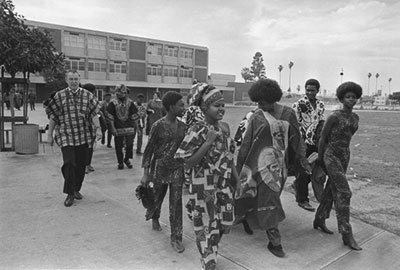
African American History
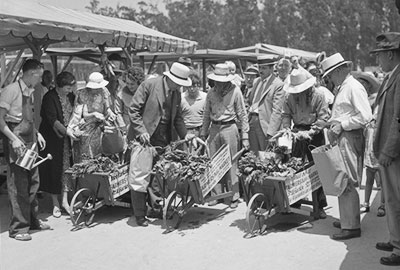
Agriculture
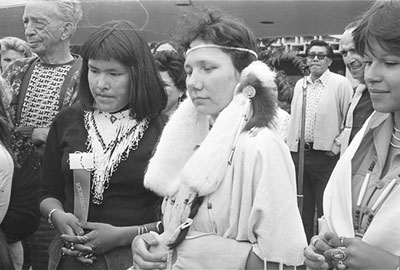
American Indian History
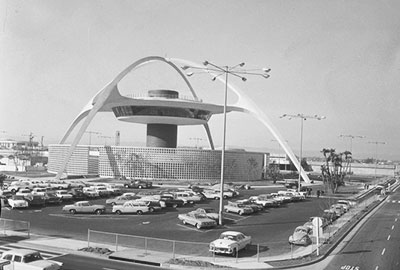
Architecture, Landscape Architecture, and Design
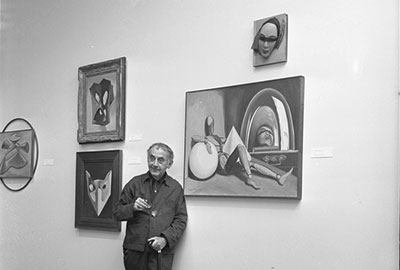
Asian American History
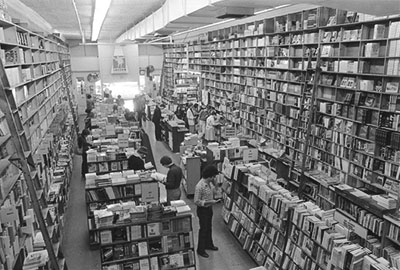
Books and Fine Printing
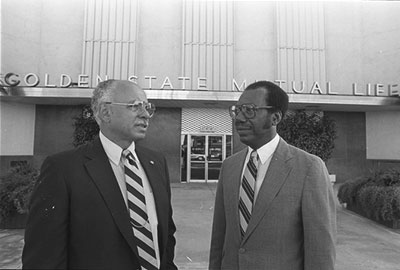
Central Americans in Southern California
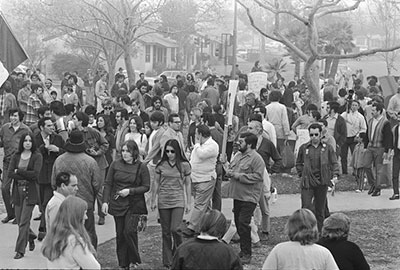
Chicano Movement
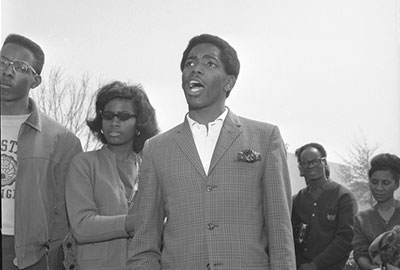
Civil Liberties
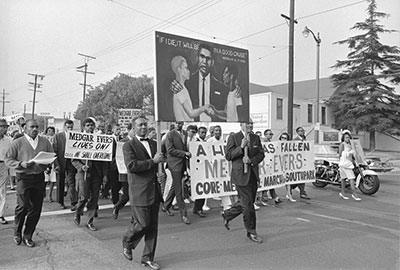
Civil Rights Movement
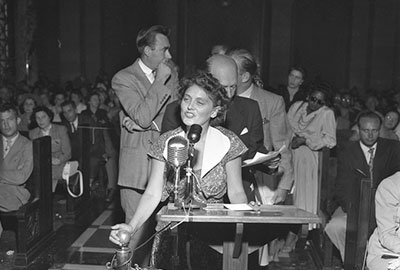
Communist Party
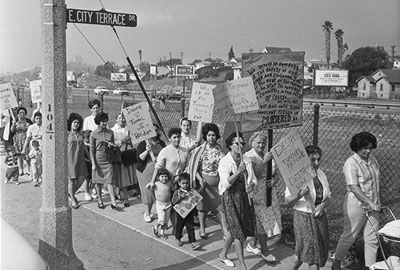
Community Activism
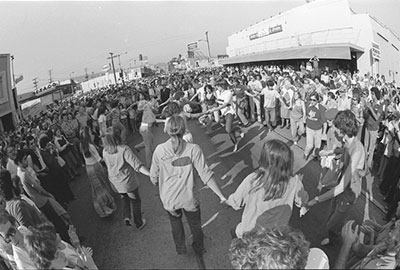
Community History

Environmental Movement
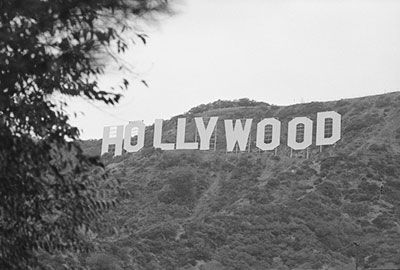
Film and Television
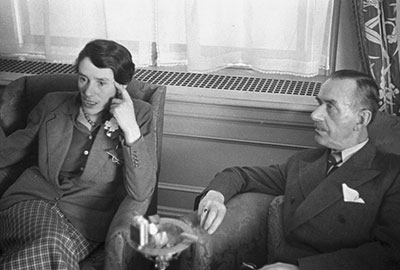
German Émigrés
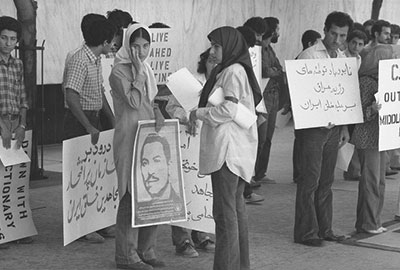
Iranian American History
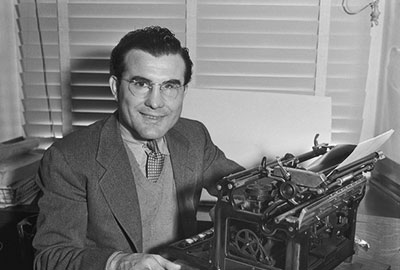
Labor Movement
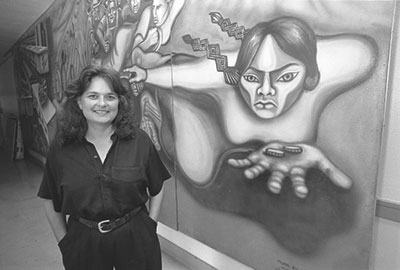
Latina and Latino History
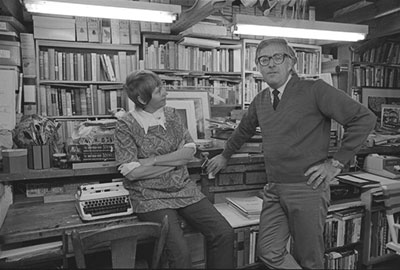
Military History
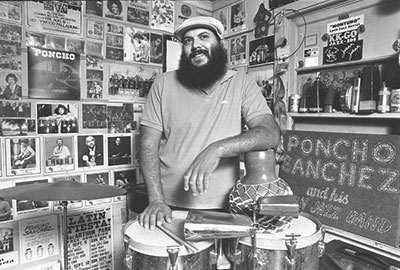
Photography
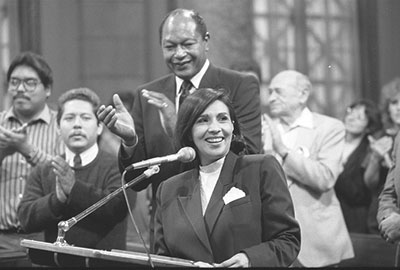
Politics and Government
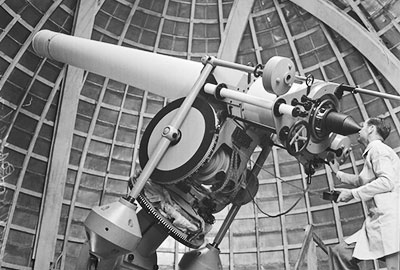
Science, Medicine, and Technology
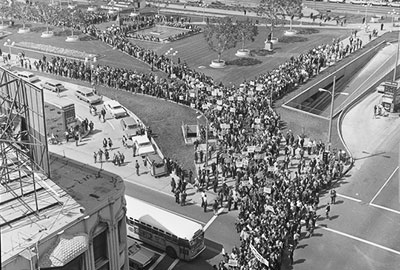
Social Movements
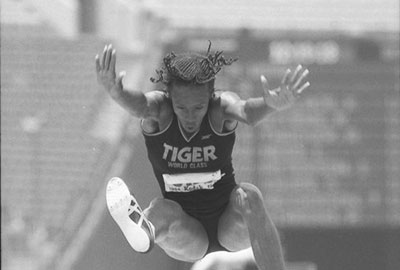
UCLA and University of California History
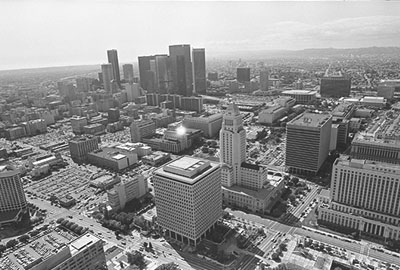
Urban Planning
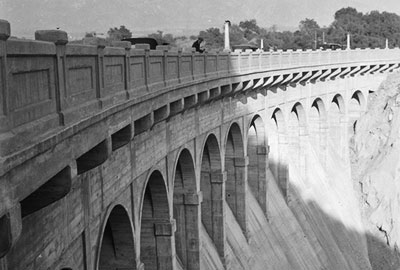
Water Resources
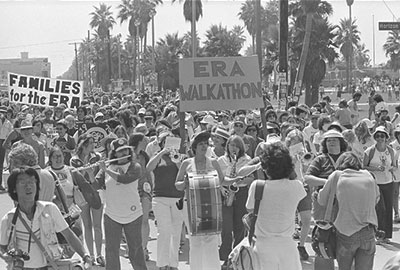
Women's Issues

Oral History: Oral History Projects and Examples
- Best Practices
- Interviewing
- Oral History Tools
- Oral History Projects and Examples
- TCTC Oral History Project
- Research and Writing Basics
Examples of Oral History
- After the Day of Infamy: "Man-on-the-Street" Interviews Following the Attack on Pearl Harbor Features a wide diversity of opinion concerning the war and other social and political issues of the day, such as racial prejudice and labor disputes.
- Black Oral History Collection Civil Rights Digital Library, Digital Library of Georgia
- Civil Rights History Project at the Library of Congress An ongoing oral history collection with relevance to the Civil Rights movement to obtain justice, freedom and equality for African Americans conducted through the Library of Congress
- Civil Rights in Mississippi Digital Archives From the University of Southern Mississippi. Use the search tool to find several examples of oral history transcripts as well as other primary sources.
- Densho Oral History about Mass Incarceration of Japanese Americans during WWII Slide backgroundOral history interviews, photos, newspapers, and other primary sources that document the Japanese American experience from immigration through redress with a strong focus on the World War II mass incarceration.
- Documenting the American South The University of North Carolina at Chapel Hill
- Explorations in Black Leadership: Oral History Interviews Institute for Public History, University of Virginia
- Nevada Test Site Oral History Project The Nevada Test Site Oral History Project at the University of Nevada, Las Vegas is a comprehensive program dedicated to documenting, preserving and disseminating the remembered past of persons affiliated with and affected by the Nevada Test Site during the era of Cold War nuclear testing.
- Occupational Folklife Project An ongoing oral history project meant to document the culture of contemporary American workers during an era of economic and social transition, including interviews with workers in scores of trades, industries, crafts, and professions.
- South Asian Oral History Project The SAOHP represents one of the first attempts in the U.S. to record pan-South Asian immigrant experiences, reflecting religious, linguistic, occupational and gender diversity and provide rich insight into changing experiences of South Asians.
- Southern Journey Oral History Collection This collection of oral histories, completed from 1991 to 1994, contains narratives of 119 individuals describing the activities and people involved in the Civil Rights Movement in the southern states of North Carolina, South Carolina, Georgia, Alabama, Florida, and Mississippi.
- Southern Oral History Collection This is a collection of oral histories about Southern life as collected by the University of North Carolina.
- Story Corps Since 2003, StoryCorps has collected and archived more than 45,000 interviews with nearly 90,000 participants and is one of the largest oral history projects of its kind.
- Veterans History Project The Veterans History Project of the American Folklife Center collects, preserves, and makes accessible the personal accounts of American war veterans so that future generations may hear directly from veterans and better understand the realities of war.
- Voice/Vision Holocaust Survivor Oral History Archive Search Promotes cultural, racial and religious understanding through unprecedented worldwide access to its collection of Holocaust survivor narratives.
- Voices from the Days of Slavery Almost 7 hours of interviews recorded between 1932 and 1975 in nine Southern states. 23 interviewees, born between 1823 and the early 1860s, discuss how they felt about slavery, slaveholders, coercion of slaves, their families, and freedom. They have much to say about living as African Americans from the 1870s to the 1930s, and beyond.(Library of Congress)
- Groundswell: Oral History for Social Change "A network of oral historians, activists, cultural workers, community organizers, and documentary artists that use oral history to further movement building and transformative social change."
- Voices of Feminism Oral History Project The Voices of Feminism Oral History Project documents the persistence and diversity of organizing for women in the United States in the latter half of the 20th century. Narrators include labor, peace, and anti-racism activists; artists and writers; lesbian rights advocates; grassroots anti-violence and anti-poverty organizers; and women of color reproductive justice leaders.
- Web of Stories Listen to some of the greatest people of our time telling their life stories, from Stan Lee to Doris Lessing telling stories about their lives and their achievements.
- “Telling Their Stories” – Oral History Archive Project of the Urban School Read, watch, and listen to student interviews of elders who witnessed key historic events of the 20th century.
Testimonies of the 9/11 Attacks
- Oral Testimony from Survivors of the World Trade Center Attack From The 9/11 Encyclopedia The events of September 11 are almost impossible to comprehend, but the best testimony to the horrors of that day comes from the survivors. These survivors witnessed acts of heroism and selflessness along with panic and desperation.
- Eyewitness Account of the Pentagon Attack From The 9/11 Encyclopedia The attack on the Pentagon has received much less attention than that on the World Trade Center or the crash of United Airlines Flight 93, but it was still a major attack. Casualties were high, with many of the survivors suffering bad burns. Lieutenant Colonel Ted Anderson's account gives an idea of what happened on September 11 at the Pentagon.
- Account of Events on United Airlines Flight 93 From The 9/11 Encyclopedia Of all the events on September 11, the hijacking of United Airlines Flight 93 was the most dramatic because of the heroic reaction of its passengers. Realizing that the hijackers were on a suicide mission, the passengers attempted to regain control of the aircraft. The fact that they failed to save their own lives does not diminish their effort. Here is the account of Tom Burnett's role in the effort to regain control of the airliner.
- Dog Handlers at Ground Zero From The 9/11 Encyclopedia Finding survivors in the wreckage of the World Trade Center was a daunting task. Dog teams were indispensable to that effort. As days passed, the searchers could only hope to find bodies and body parts so that the victims could be identified and their families could have closure. The dog teams were even more critical to these later efforts. It was hard on the dogs, but they performed admirably.
- President George W. Bush's Address to the Nation (September 11, 2001) From The 9/11 Encyclopedia Americans were in a state of shock on September 11, 2001. The unthinkable had happened: a terrorist attack on the United States had killed thousands of Americans. President George W. Bush had been as startled as anybody else in the United States. In this speech, which he gave on the evening of September 11, 2001, he tried to reassure Americans that their government was going to help in the recovery and deal with the terrorists.
Vietnam War Interviews
- President John F. Kennedy’s Remarks on the Situation in Vietnam From Encyclopedia of the Vietnam War: A Political, Social, and Military History
- Ho Chi Minh: Replies to an Interview with Japanese NDN TV From Encyclopedia of the Vietnam War: A Political, Social, and Military History
Personal Accounts regarding Conspiracy Theories in the U.S.
- A Short Narrative of the Horrid Massacre in Boston From Conspiracy Theories in American History
- Nat Turner, Confessions From Conspiracy Theories in American History
- Charles Chiniquy, Fifty Years in the Church of Rome From Conspiracy Theories in American History
- Lee Harvey Oswald, “Historic Diary” From Conspiracy Theories in American History
Oral History Videos
Descriptions and Recollections of Labor in the U.S.
- Emma Goldman: Excerpts from Her Autobiography From Historical Encyclopedia of American Labor
- Eugene V. Debs: Excerpts from His Statement Upon Sentencing for Violation of the Espionage Act From Historical Encyclopedia of American Labor
- The Lawrence Strike, 1912: Excerpt from the Autobiography of Big Bill Haywood From Historical Encyclopedia of American Labor
- Flint Sit-Down Strike: Excerpt of 1976 Interview of Genora Johnson Dollinger From Historical Encyclopedia of American Labor
- Forty Years in a Steel Mill: Studs Terkel Interviews Steelworker Steve Dubi From Historical Encyclopedia of American Labor
- An Insider's View of the Fair Employment Practices Committee: An Interview with Earl B. Dickerson From Historical Encyclopedia of American Labor
- Persecution of the Industrial Workers of the World: “Big Bill” Haywood's Description of the 1919 Murder of Wesley Everest From Historical Encyclopedia of American Labor
- Real-Life Rosie the Riveter: Excerpt of Augusta Clawson's Experiences as a World War II Shipyard Worker From Historical Encyclopedia of American Labor
- Stella Nowicki: Interview with a Meatpacking Plant Worker, 1973 From Historical Encyclopedia of American Labor
- Terence V. Powderly: Excerpts from His Autobiography From Historical Encyclopedia of American Labor
- Voluntarism: Excerpts from Samuel Gompers's Autobiography From Historical Encyclopedia of American Labor
- Excerpts from Samuel Gompers's Testimony before a U.S. House Committee upon the Relations between Labor and Capital From Historical Encyclopedia of American Labor
- Triangle Fire: Excerpts from the March 1911 New York Times Account of the Fire and from an April 1911 Speech by Rose Schneiderman From Historical Encyclopedia of American Labor
- Sweatshops: Excerpt from Louis Levine's Description of Turn-of-the-Century Abuses in Garment-Industry Sweatshops From Historical Encyclopedia of American Labor
- Textile Workers: Excerpt of Testimony before the U.S. Senate by John Hill From Historical Encyclopedia of American Labor
- Gilded Age Social Conditions: Testimony before the U.S. Senate Committee upon the Relations between Labor and Capital From Historical Encyclopedia of American Labor
- << Previous: Oral History Tools
- Next: Ethics >>
- Last Updated: Sep 28, 2023 4:14 PM
- URL: https://library.tctc.edu/OralHistory
Oral History Offers a Model for How Schools Can Introduce Students to Complex Topics

- Share article
As historian David McCullough said, history is the study of who we are and why we are the way we are.
That’s why teachers in the Memphis-Shelby County public schools, as racially isolated now as they were when the U.S. Supreme Court outlawed school segregation, have launched a curriculum to introduce their students to the 13 children who helped integrate these Tennessee city schools in 1961.
Memphis-Shelby County teachers, researchers from the University of Memphis, and the local Memphis 13 Foundation worked with seven of the 10 surviving members of the Memphis 13—a group of Black 1st graders who peacefully enrolled in four all-white schools at the height of the civil rights era—to develop teacher training, lesson plans, and oral history activities for elementary students.

“Just going home and talking to grandparents or talking to the elders in their community was never going to be enough,” said Anna Falkner, an assistant professor at the University of Memphis and a co-developer of the curriculum, “because it wouldn’t provide [students] with the context that they needed in order to understand what happened and understand the ongoing effects of, for example, the way segregation looks today.”
The Memphis 13 project offers a model for how schools can introduce complex subjects to students, even in early grades, while also giving them opportunities to investigate social studies in their communities
“Really consider the context,” Falkner said. “What are the specifics that can help students understand their Southern context or the context wherever they are and what that means in relation to the larger experience. It’s not just focusing on that national narrative, not just sharing Brown v. Board , but really thinking about, what did this look like in my backyard? What did it look like for my family members or my community members?”
For example, teachers met with surviving members of the Memphis 13 to identify projects for students in 2nd and 5th grades, when Tennessee social studies standards cover civil rights issues. Sheila Malone, one of the students who first integrated into the district’s Bruce Elementary as a 1st grader, suggested that 5th graders record the experiences of others who had attended the district schools during desegregation.
“[Malone] wanted the students to go back home and share the story and have intergenerational conversations about the history of our schools,” said Gina Tillis, the director of curriculum and instruction for the Memphis 13 Foundation, who co-developed the Memphis curriculum. “One of the things that I’ve noticed with the members of Memphis 13 is, as they’re sharing their stories, they’re unpacking memories that have been silenced. … This is a really powerful space for students to reflect on their education, their parents’ and their elders’ education, and what we’re doing collectively to create a more inclusive and equitable school system.”
Second graders, for example, watch documentaries and review news accounts about the school desegregation decisions in Memphis and other cities, identifying ways children their age participated. In 5th grade , students review collected oral history interviews and collect their own, as well as analyze modern policies related to school integration. Tillis said the project plans to expand the curriculum to 8th and 11th grades in the future.
Building school integration history projects
Emerging technology has made it easier for educators to engage their students in active historical research, according to the Center for Public History and Digital Humanities at Cleveland State University in Ohio. The center, for example, has developed apps to help students record interviews and archive historical documents.
Efforts like those of the Memphis 13 helped integrate public schools in the decades following the landmark U.S. Supreme Court ruling in Brown v. Board of Education . However, these trends began to reverse in the 1990s and have worsened to this day, even as the overall public school population has grown more diverse. Studies find schools serving high populations of students of color continue to have on average fewer educational opportunities —including challenging courses, experienced teachers, and other resources—compared with schools serving mostly white students.
While the Memphis 13 are well known, Tillis stressed that schools can use community history to engage students regardless of where they are. “Everyone has a school desegregation story. Every district, every person ... and every district story is unique,” she said. “It’s, I think, one of the most powerful stories to share because it offers you this platform to really deconstruct what’s going on in our schools.”
Researchers recommended that schools interested in developing similar projects:
- Work with local historians and groups to identify social studies topics and events that had strong effects on the local community. This can include school district librarians or archivists, for example.
- Provide teachers with training in both the historical context and strategies and tools for documenting community history.
- Focus on topics that encourage students to make connections between history and current issues in their community.
“One of the lessons that we’re hoping to share with other school districts is just the power of listening to your community members who are historians, even if they don’t work for the local archive: the neighbor down the street who kept all the newspapers, the person who knew everybody in the neighborhood,” Falkner said. “Finding those community members and making a meaningful way for them to participate in the curriculum development is the most important piece.”
Sign Up for EdWeek Update
Edweek top school jobs.

Sign Up & Sign In

Help | Advanced Search
Physics > Popular Physics
Title: technical, organizational and oral history regarding the soil samples measurements for cs-137 because of the chernobyl accident fallout.
Abstract: Data are given, commentary is supplied and explanations are provided with regard to the technical, the organizational and, of course, the human history connected to the time of research, which resulted to the paper entitled "Soil sampling and Cs-137 analysis of the Chernobyl fallout in Greece", written by late Professor S.E. Simopoulos. This paper has been provided in Greek translation within an issued honorary volume (ISBN 978-960-254-714-4). Reasonably, the narration starts with the review of the political, the financial and the social situation of Greece around 1986. Subsequently, an analysis is given on the then available means, the persons involved, the methods used, the lessons learned and any other connection with the oral history of the NTUA's Nuclear Engineering Laboratory and other relevant Greek Laboratories. For this history, written proof is now scarce and the persons available to pass it on are growing less and less. N.P. Petropoulos, now Laboratory member and then student of Professor S.E. Simopoulos was in charge of preparation of this text.
Submission history
Access paper:.
- Other Formats
References & Citations
- Google Scholar
- Semantic Scholar
BibTeX formatted citation
Bibliographic and Citation Tools
Code, data and media associated with this article, recommenders and search tools.
- Institution
arXivLabs: experimental projects with community collaborators
arXivLabs is a framework that allows collaborators to develop and share new arXiv features directly on our website.
Both individuals and organizations that work with arXivLabs have embraced and accepted our values of openness, community, excellence, and user data privacy. arXiv is committed to these values and only works with partners that adhere to them.
Have an idea for a project that will add value for arXiv's community? Learn more about arXivLabs .

IMAGES
VIDEO
COMMENTS
After the Oral History Interview. 1. Download interview files onto your computer, following the instructions provided. 2. On your computer, rename each file by right clicking on file and selecting rename. Rename it in this format: LastnameFirstname_Date_Interview#_File#, for example, JonesSandra_04-30-2020_1. 3.
The Oral History Review, published by the Oral History Association, is the U.S. journal of record for the theory and practice of oral history and related fields.The journal's primary mission is to explore the nature and significance of oral history and advance understanding of the field among scholars, educators, practitioners, and the general public.
Oral History aims to contribute to developments in the theory and practice of oral history. It welcomes contributions, whether long or short articles, news items, reviews or reports of meetings, conferences or new projects. The joint editors welcome contributions from a wide range of disciplines and practices, for example, women's studies ...
Oral history can be a valuable source of evidence for understanding the experiences of individuals or groups within a certain historical period. Oral testimony cannot replace analysis of traditional historical materials (official documents, letters, newspapers, secondary sources, etc.). It can, however, reveal the role of individuals in shaping ...
Defining oral histories "We all have stories to tell, stories we have lived from the inside out. Oral history listens to these stories. Oral history is the systematic collection of living people's testimony about their own experiences. Historians have finally recognized that the everyday memories of everyday people have historical importance.
The Oral History Review, published by the Oral History Association, is the U.S. journal of record for the theory and practice of oral history. Its primary mission is to explore the nature and significance of oral history and advance understanding of the field among scholars, educators, practitioners, and the general public.
The Oral History Review, the official publication of the Oral History Association since 1973, explores the recording, transcribing, and preserving of conversations with people who have participated in important political, cultural, and economic social developments in modern times.. Articles, book and film reviews, and bibliographies deal with the authentication of human experience and research ...
This paper reviews techniques for verifying information collected as oral. history.It identifies the interview and ttre writing up as critical stages for. ensuring rigour in the research process ...
The Oxford Handbook of Oral History brings together forty authors on five continents to address the evolution of oral history, the impact of digital technology, the most recent methodological and archival issues, and the application of oral history to both scholarly research and public presentations. The volume offers diverse perspectives on ...
Oral History and Interviews, Harvard Library Research Guide for History. Compiled by Harvard Librarians, this guide offers strategies for locating oral history interviews, as well as a list of relevant databases and collections. Oral Histories at Schlesinger Library on the History of Women in America. Get started with archival research on women ...
Oral history is a method of conducting historical research through interviews. It is also a way to gather, preserve and interpret the voices and memories of people and communities relating to past events. The term "oral history" can refer to the act of creating a recorded testimony. It can also refer to the materials produced in an interview ...
research technique that allows the expression of voice. While storytelling has a deep history, the adaptation of this human process into a legitimated research method is relatively new. Oral history was established in 1948 as a modern technique for historical documentation when Columbia University historian Allan Nevins began
If possible, avoid fidget devices, including papers, cell phones, snacks, or cups (that being said, you may wish to have water available for both interviewer and interviewee). ... Adapted from Boston Research Center, Oral History Toolkit, 2020. << Previous: Oral History Equipment; Next: Conducting an Interview >> Last Updated: Dec 12, 2023 1:23 PM;
The Oral History Manual is designed to help anyone interested in doing oral history research to think like an oral historian. Recognizing that oral history is a research methodology, the authors define oral history and then discuss the methodology in the context of the oral history life cycle - the guiding steps that take a practitioner from ...
Abstract. This book is part of the Understanding Qualitative Research series, which is designed to provide researchers with authoritative guides to understanding, presenting, and critiquing analyses and associated inferences. There are three subareas in this series: Quantitative Research, Measurement, and Qualitative Research.
Oral history provides a fuller, more accurate picture of the past by augmenting the infor-mation provided by public records, statistical data, photographs, maps, letters, diaries, and ... Oral history is person-centered research. The creation of a recorded interview is a partnership between the narrator and interviewer. To succeed, the oral ...
Oral History Association. Baylor University One Bear Place #97176 Waco, TX 76798-7175 (615) 624-2688 [email protected]
Sequence for Oral History Research. Formulate a central question or issue. Plan the project. Consider such things as end products, budget, publicity, evaluation, personnel, equipment, and time frames. ... Essays on the Craft and Meaning of Oral and Public History. Albany: State University of New York Press, 1991. "Women's Oral ...
Handbook of Oral History chapters were written expressly for this book and with its goals in mind, giving this anthology rela tive thematic coherence. This volume has particular relevance for Kentucky, home of the only state agency devoted solely to supporting oral history and, as a result, a longtime leader in statewide oral history research.
Most students who are using oral history for a research paper will be conducting topical interviews. While you do want to record some basic biographical information about each interviewee even in topical interviews, the main focus should be to ask questions that reveal how the interviewee has impacted your topic or witnessed something about ...
The UCLA Center for Oral History Research (COHR) conducts in-depth, multi-session oral history interviews with individuals who have been a part of the history of Los Angeles and its many communities. COHR has particularly strong collections in the history of social movements, communities of color, the arts, Los Angeles politics and government ...
Oral history has been increasingly used in management research in recent years, bringing t o th e. forefront the view of individuals about past organizational phenomena. However, this use has not ...
The Voices of Feminism Oral History Project documents the persistence and diversity of organizing for women in the United States in the latter half of the 20th century. Narrators include labor, peace, and anti-racism activists; artists and writers; lesbian rights advocates; grassroots anti-violence and anti-poverty organizers; and women of ...
The Memphis 13 project offers a model for how schools can introduce complex subjects to students, even in early grades, while also giving them opportunities to investigate social studies in their ...
Data are given, commentary is supplied and explanations are provided with regard to the technical, the organizational and, of course, the human history connected to the time of research, which resulted to the paper entitled "Soil sampling and Cs-137 analysis of the Chernobyl fallout in Greece", written by late Professor S.E. Simopoulos. This paper has been provided in Greek translation within ...
Employment Type: Full-Time Tenure-Track/Tenured Faculty. Internal Number: 1. Assistant Professor of History. Lyon College invites applications for a tenure-track Assistant Professor of History position beginning in August 2024. All candidates should have their terminal degree. The History Department seeks candidates who specialize in any area ...